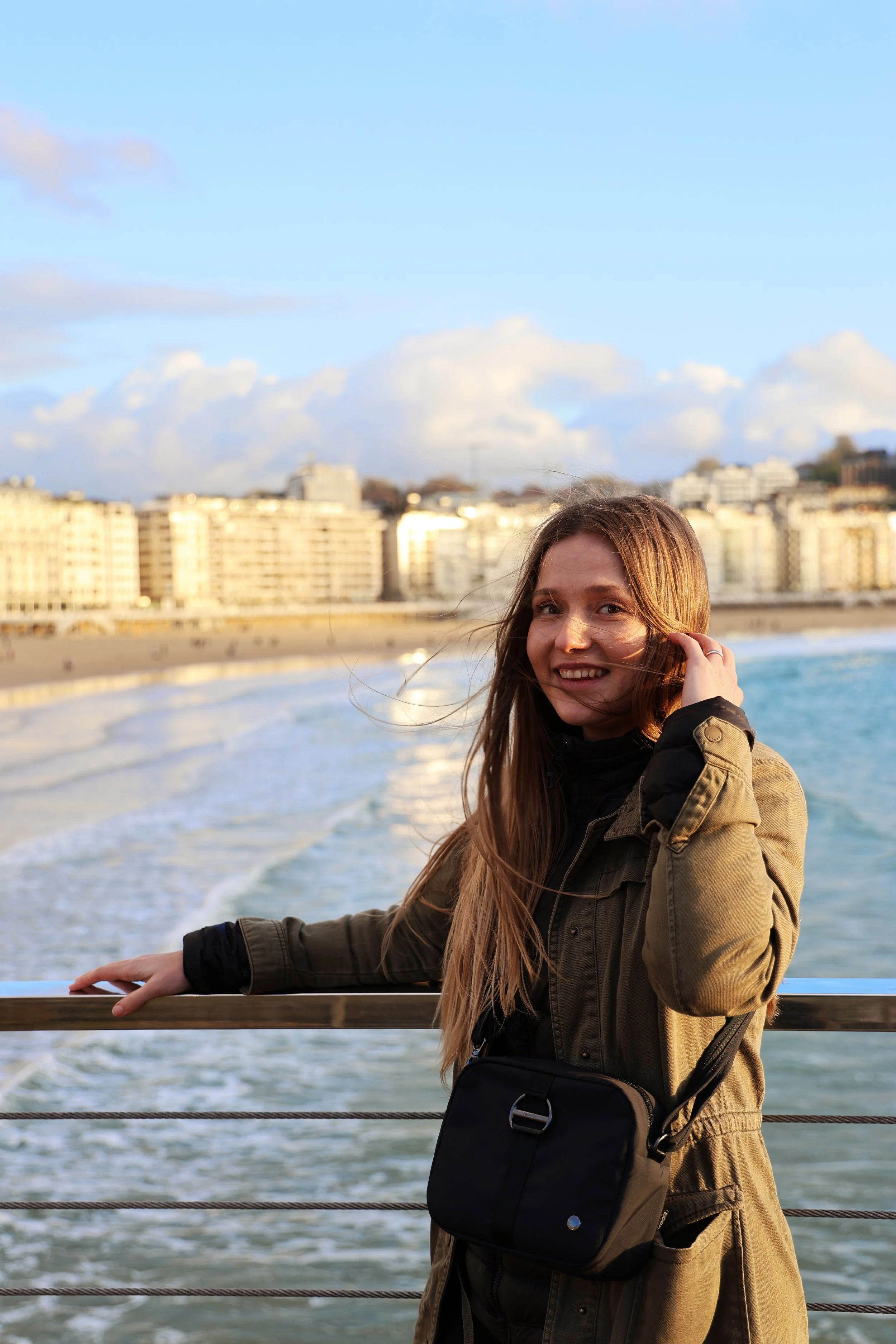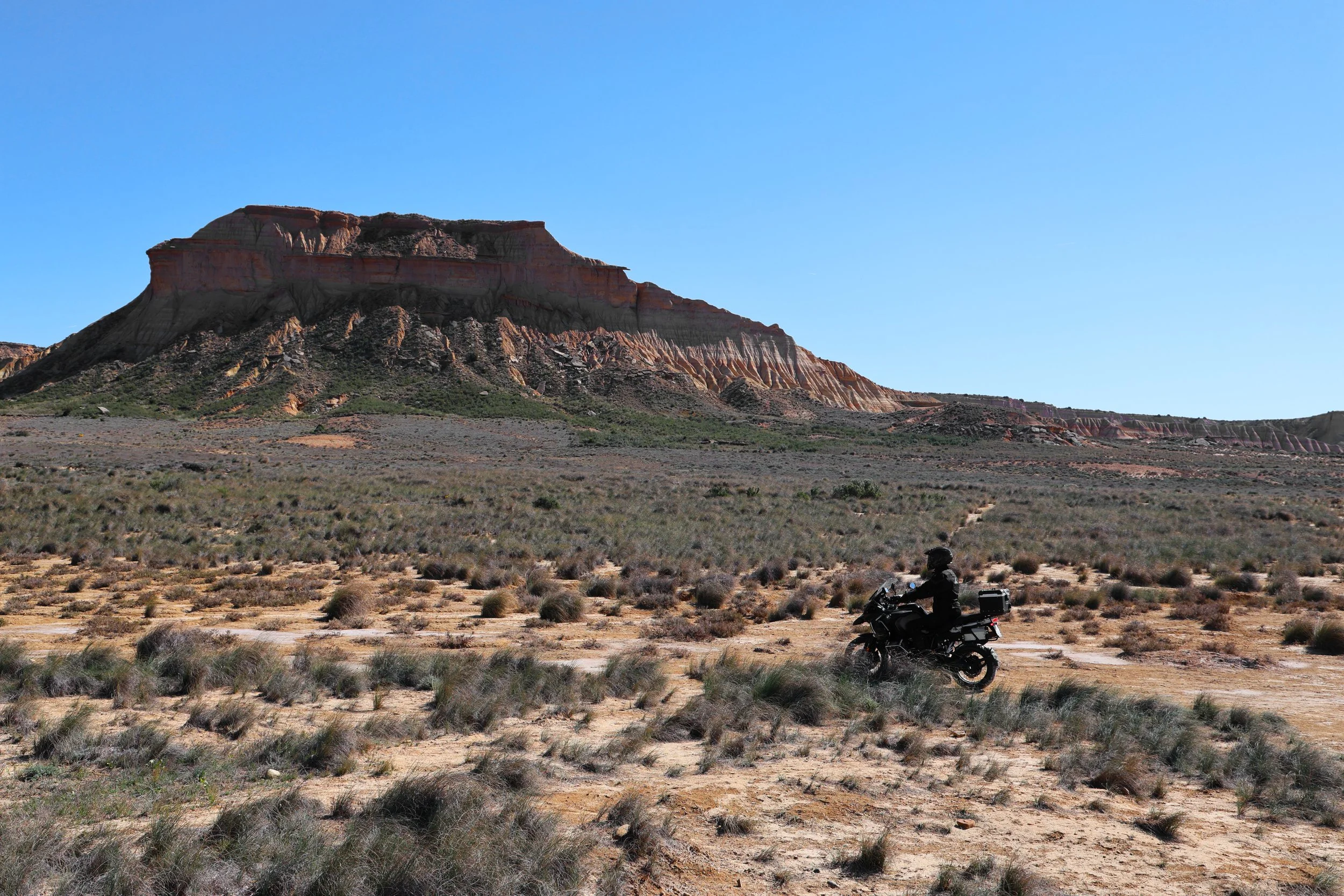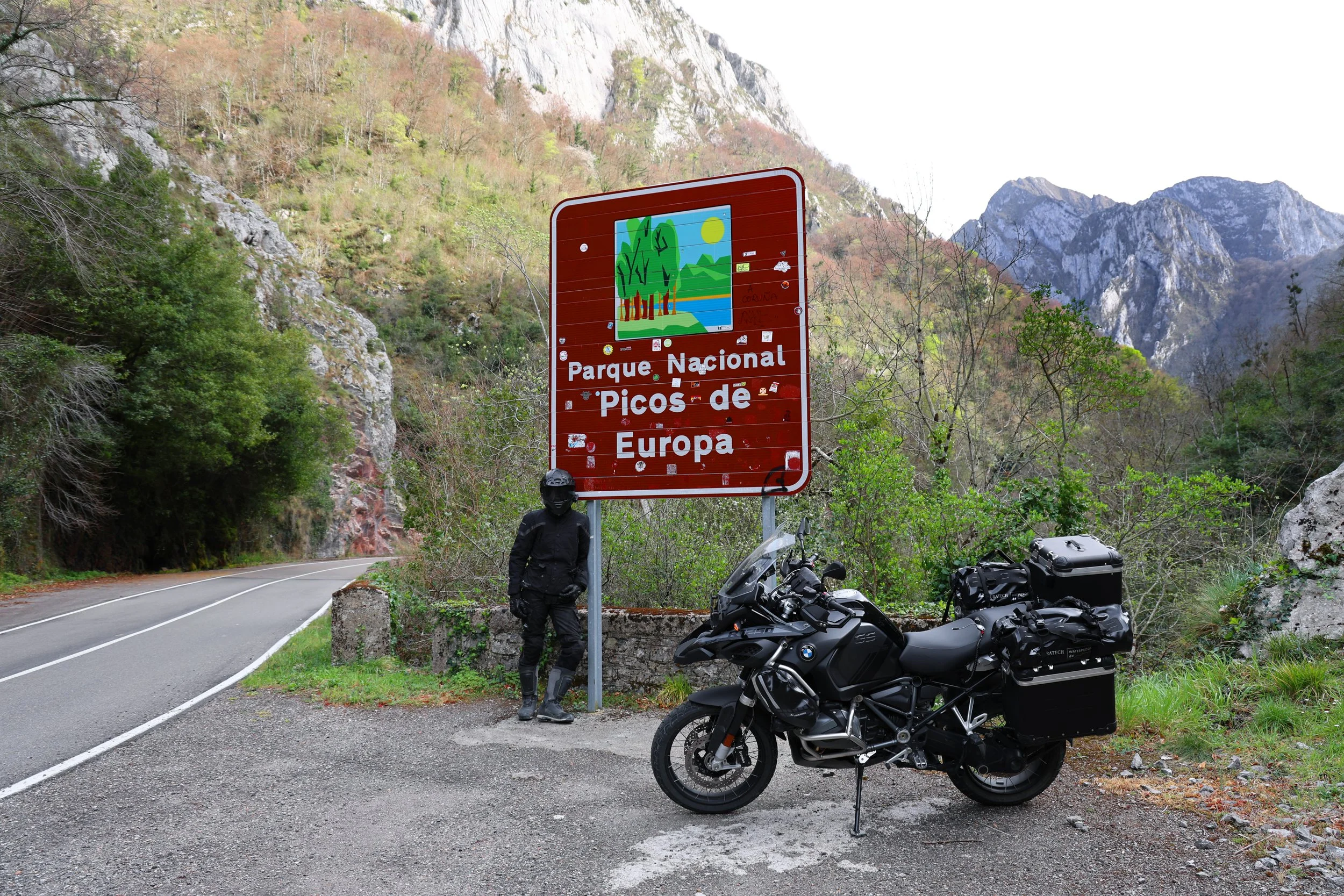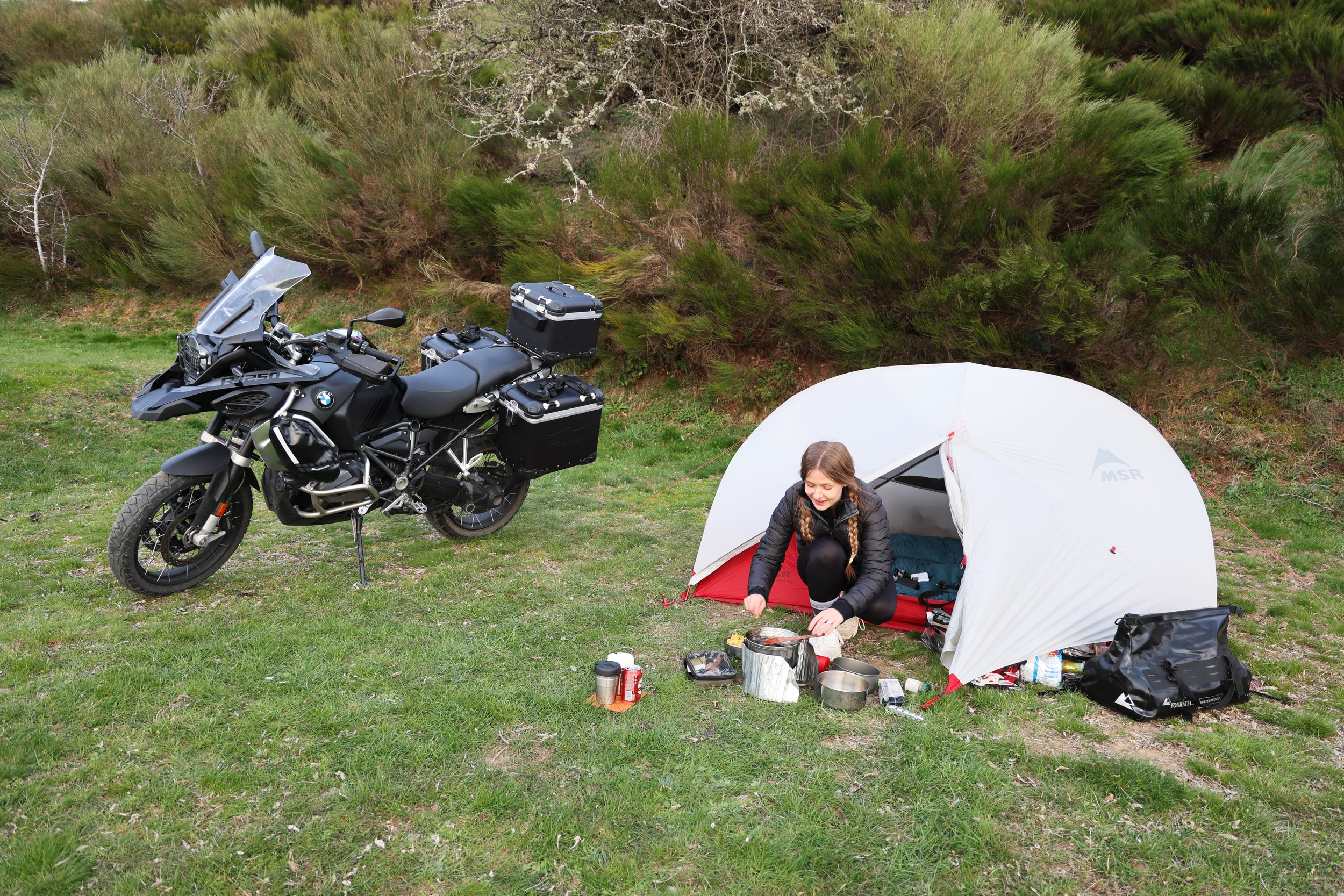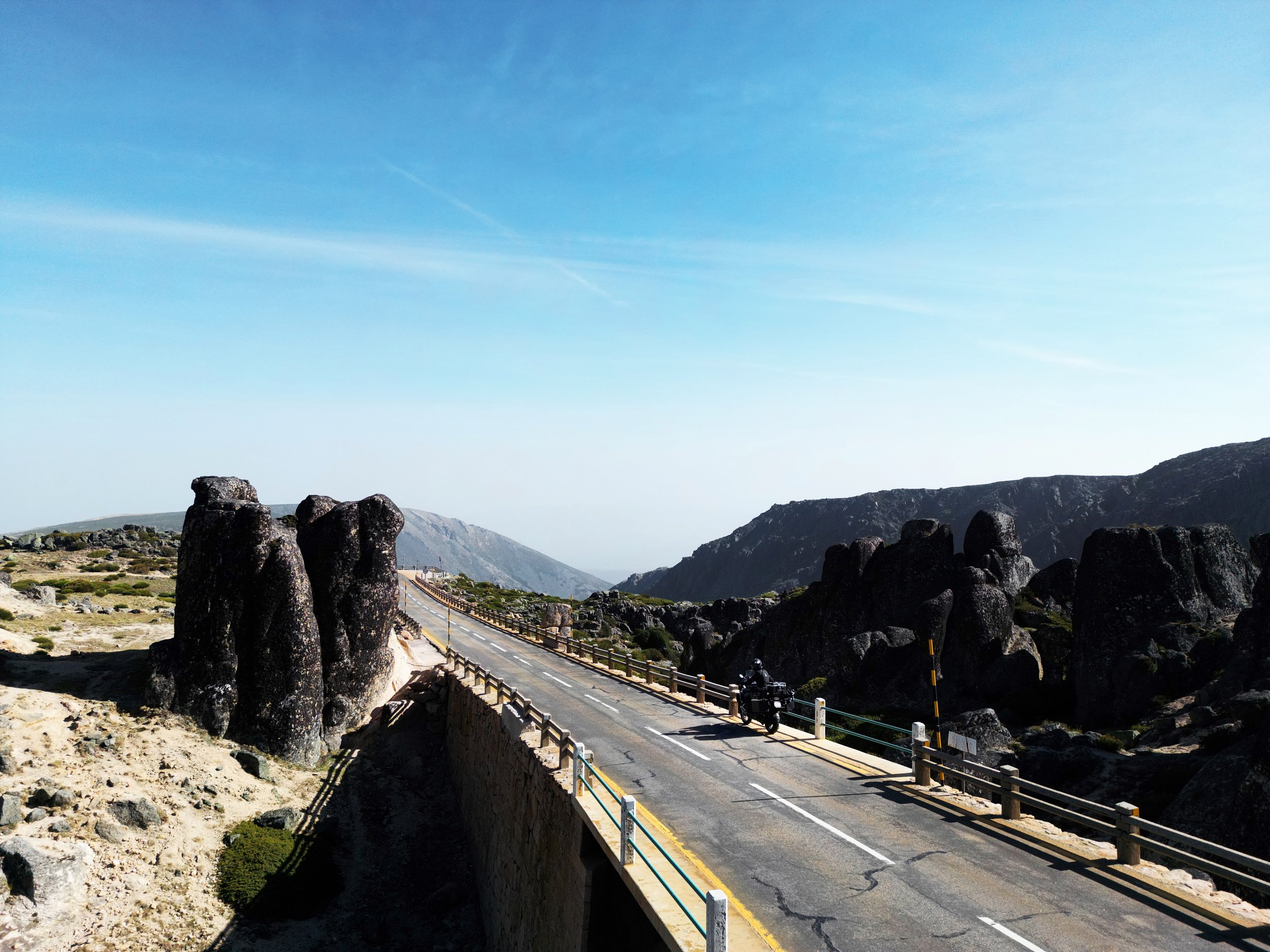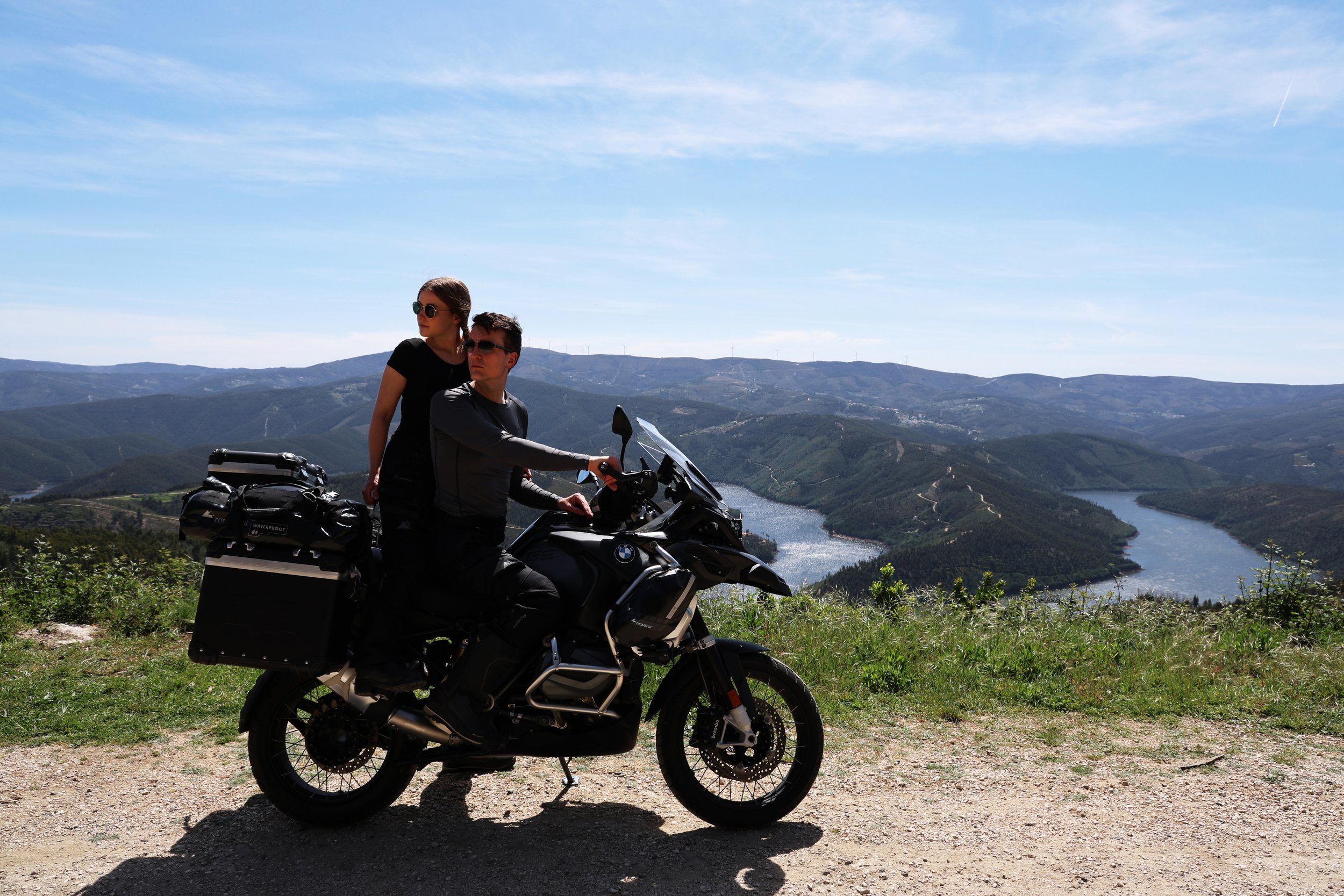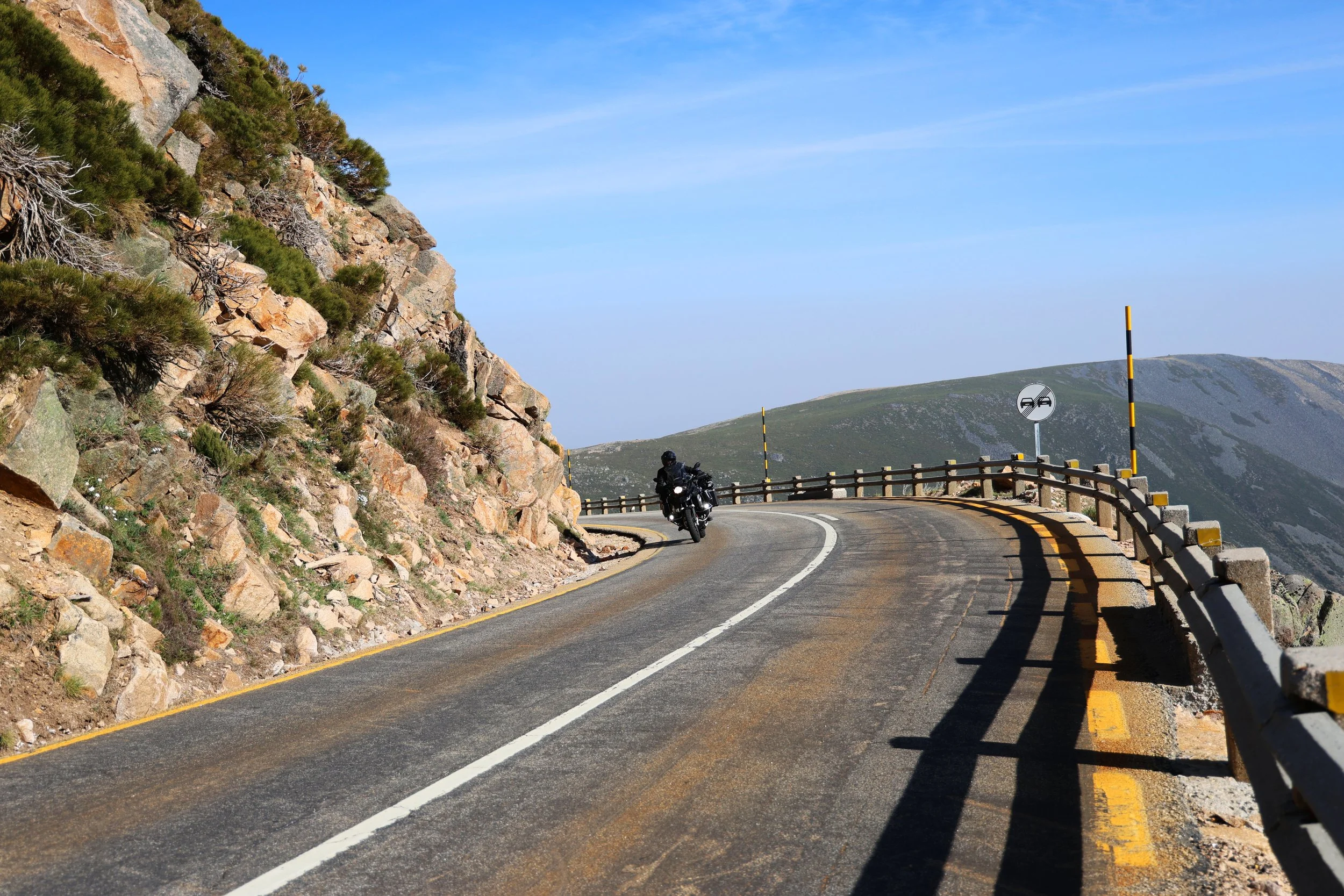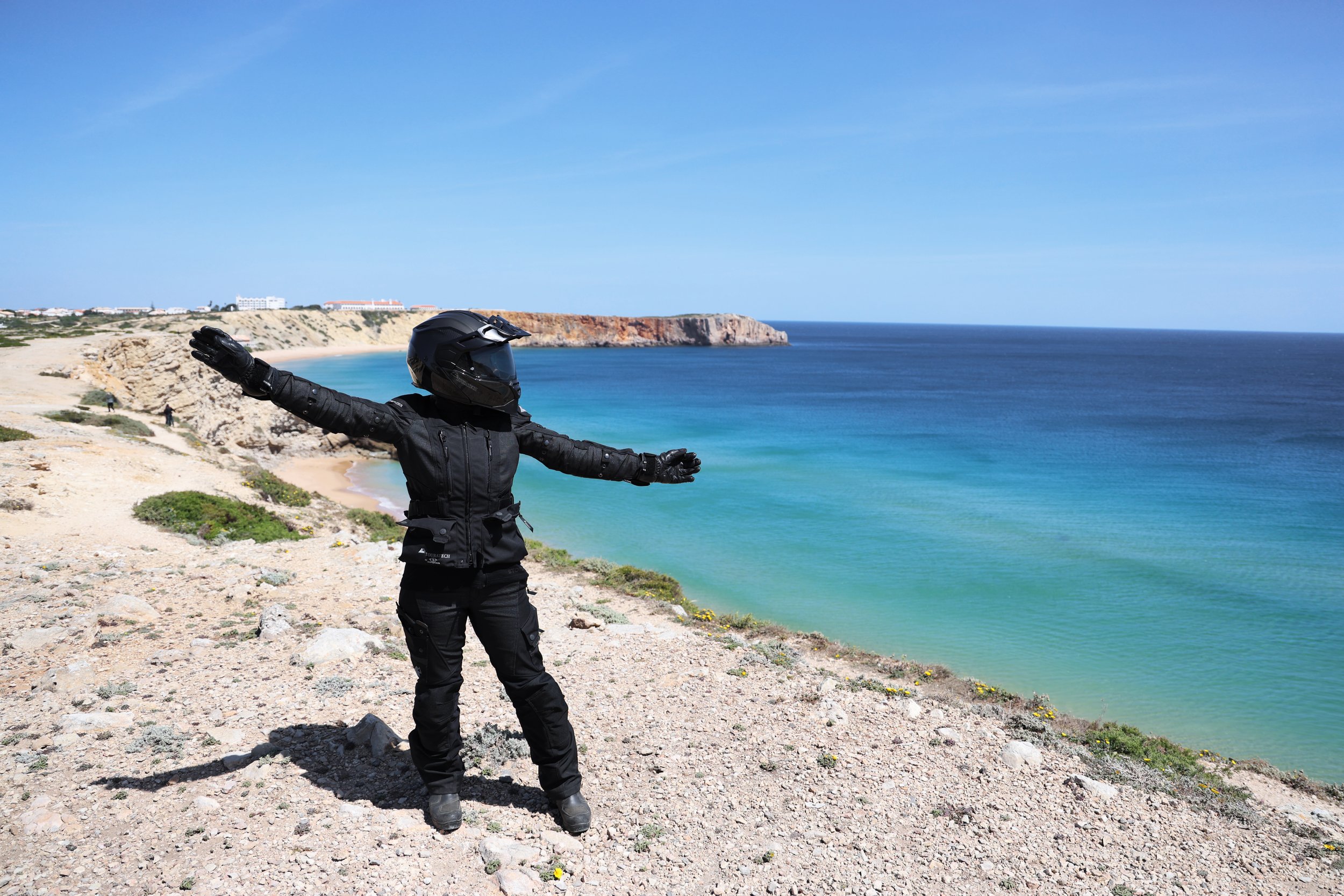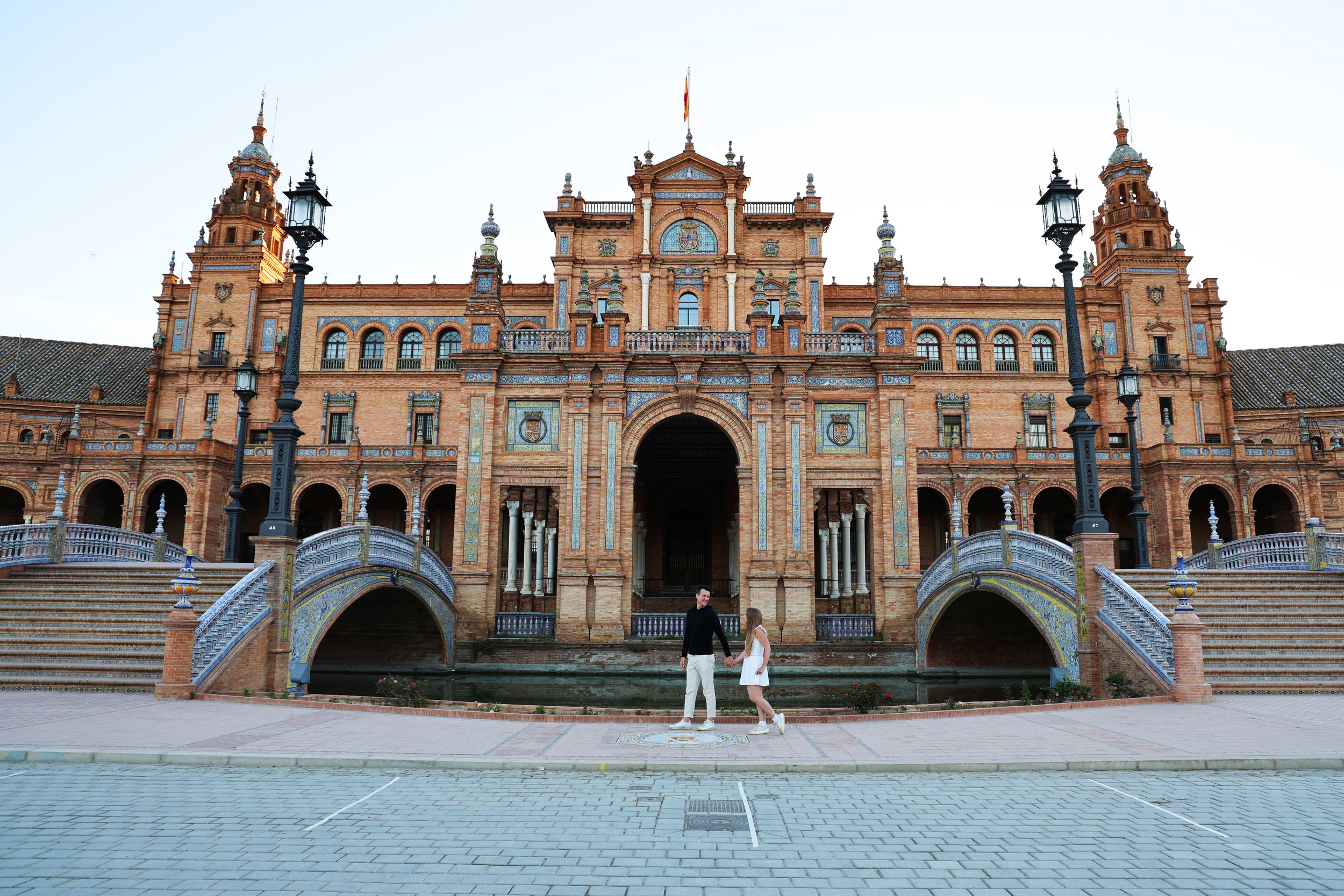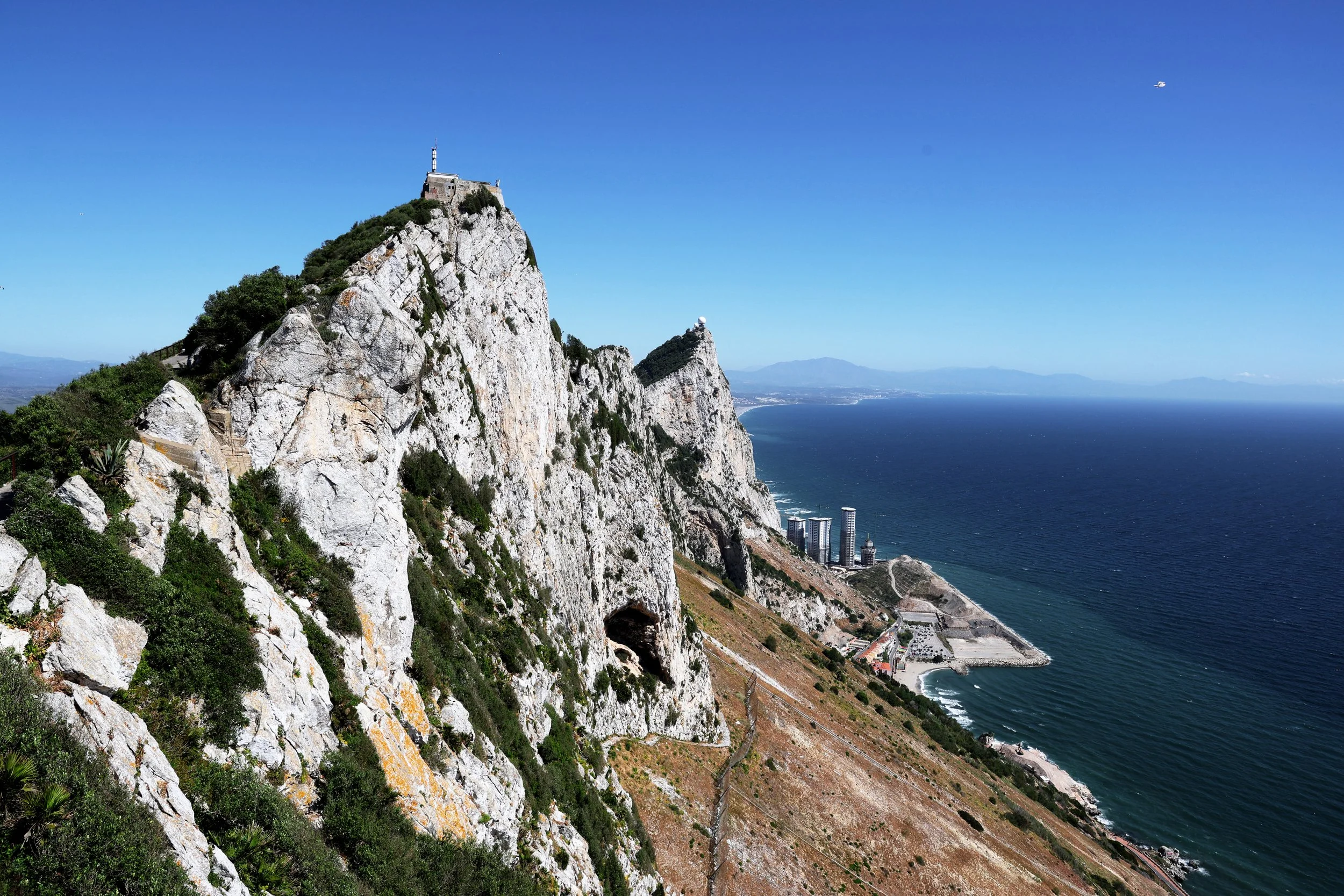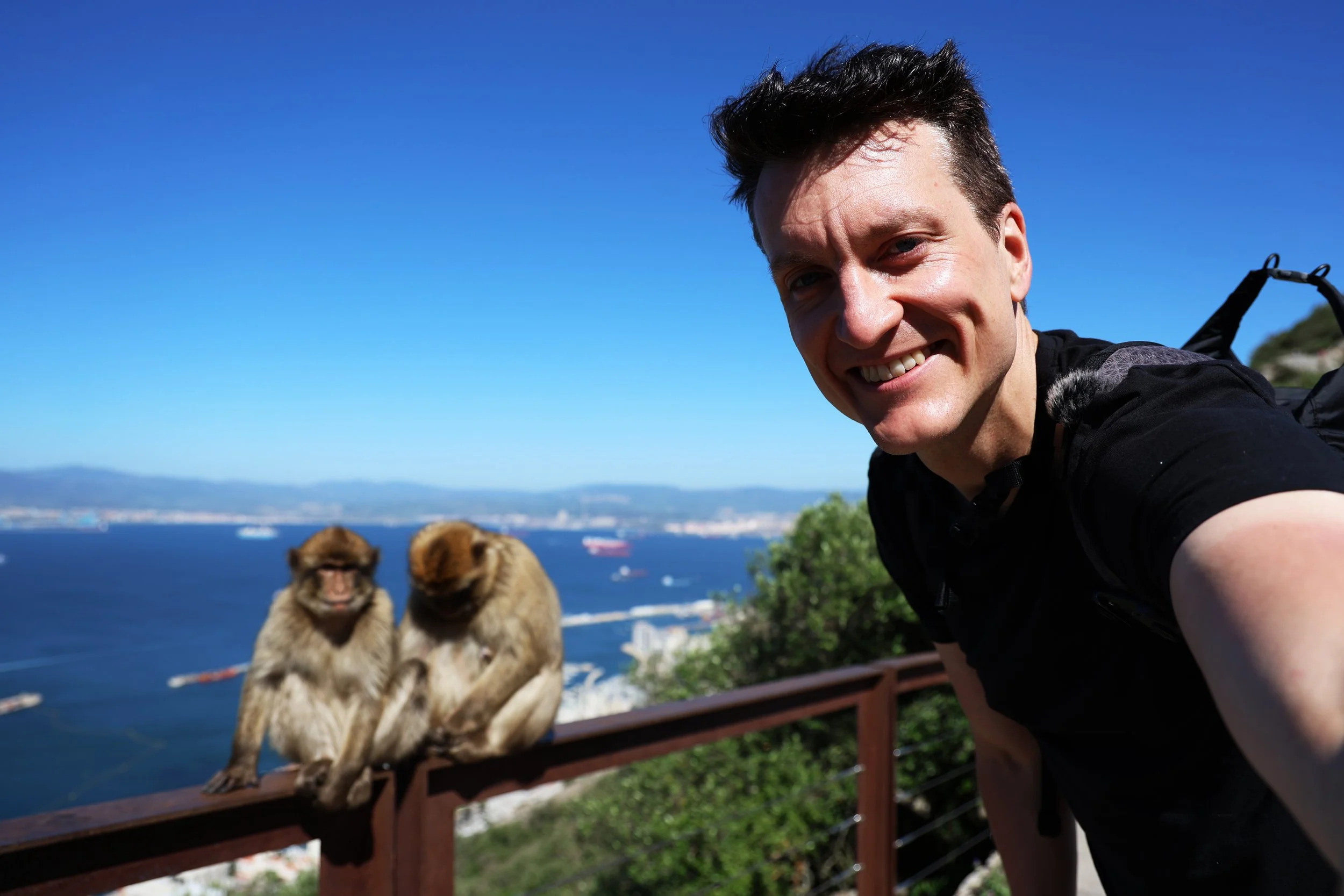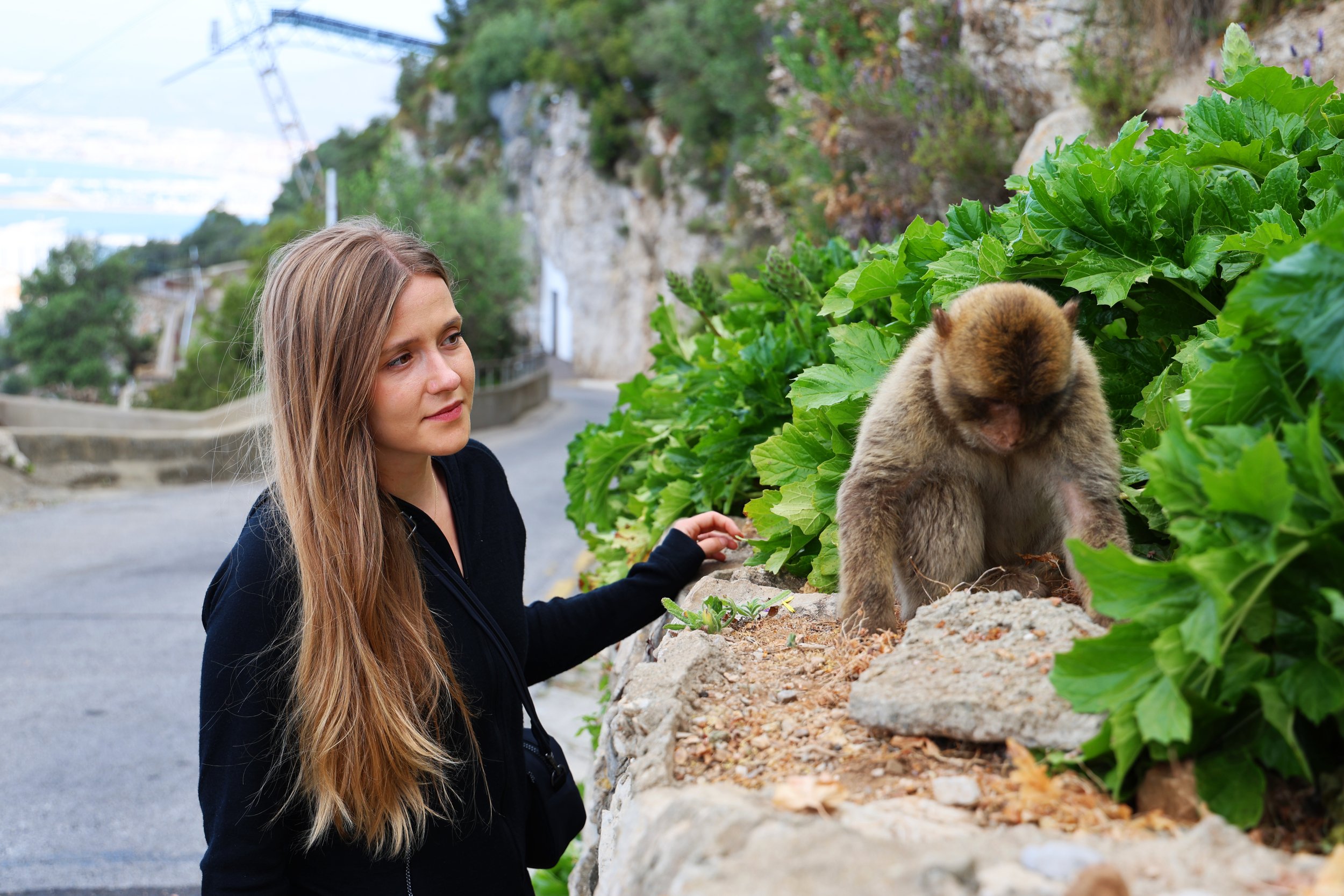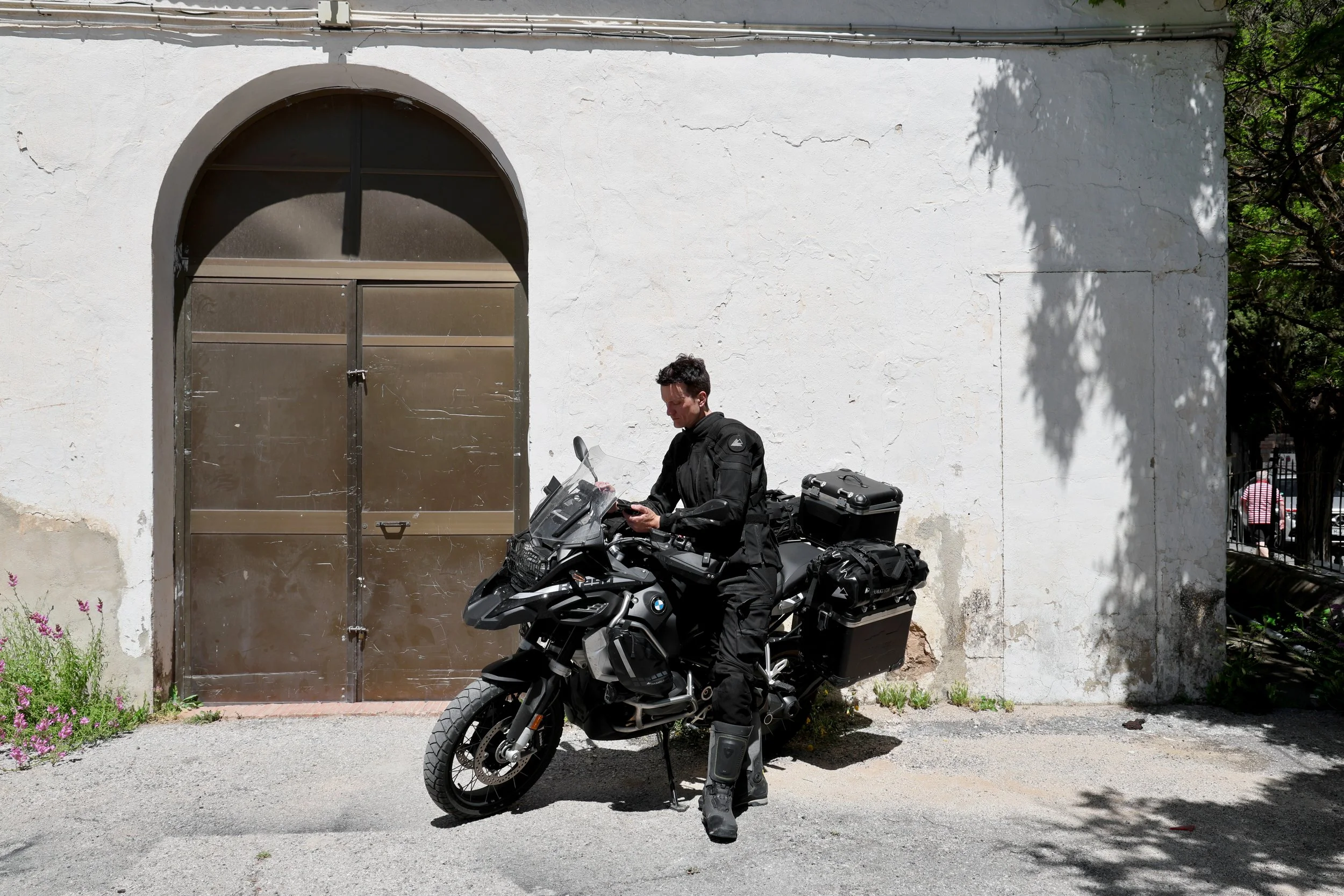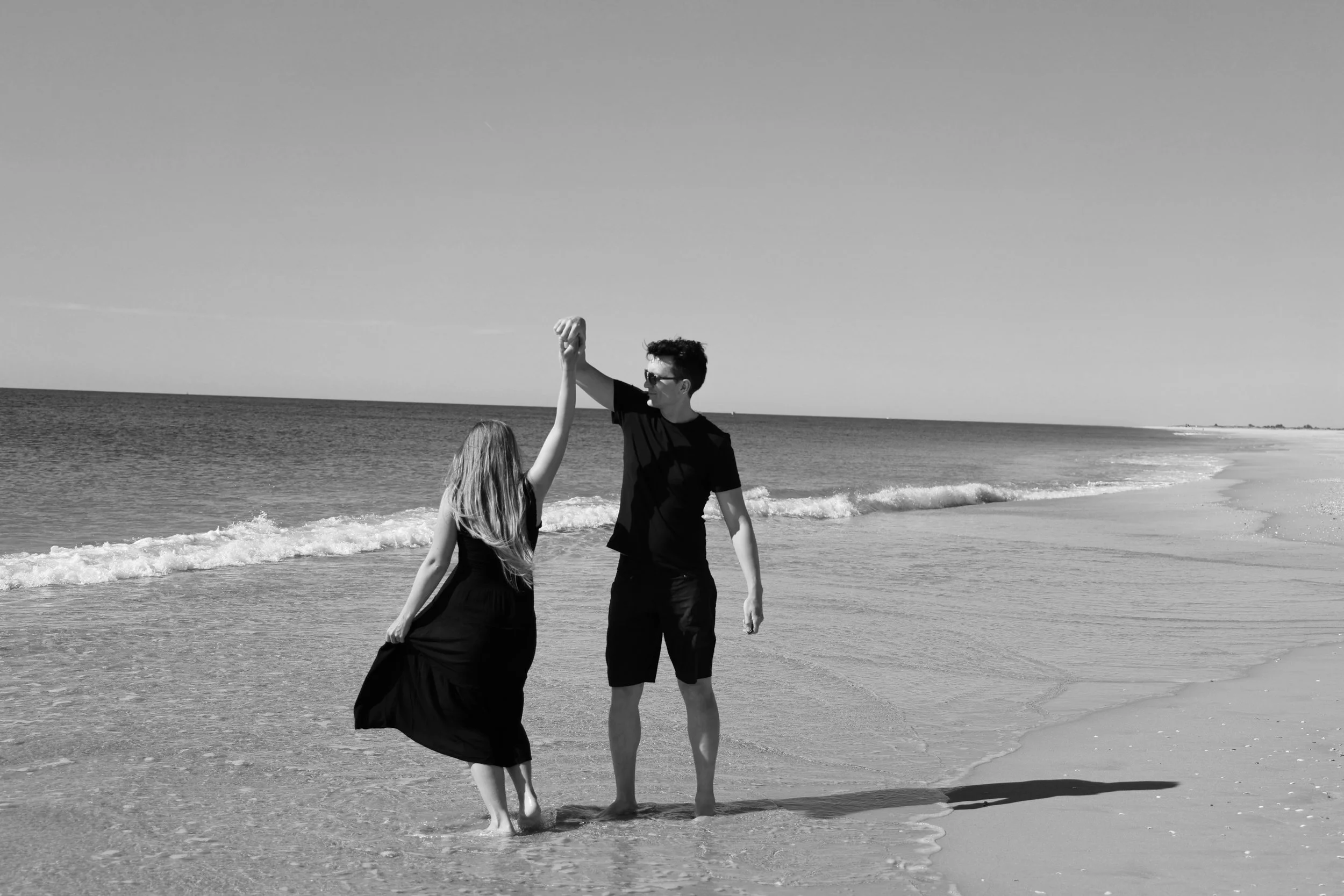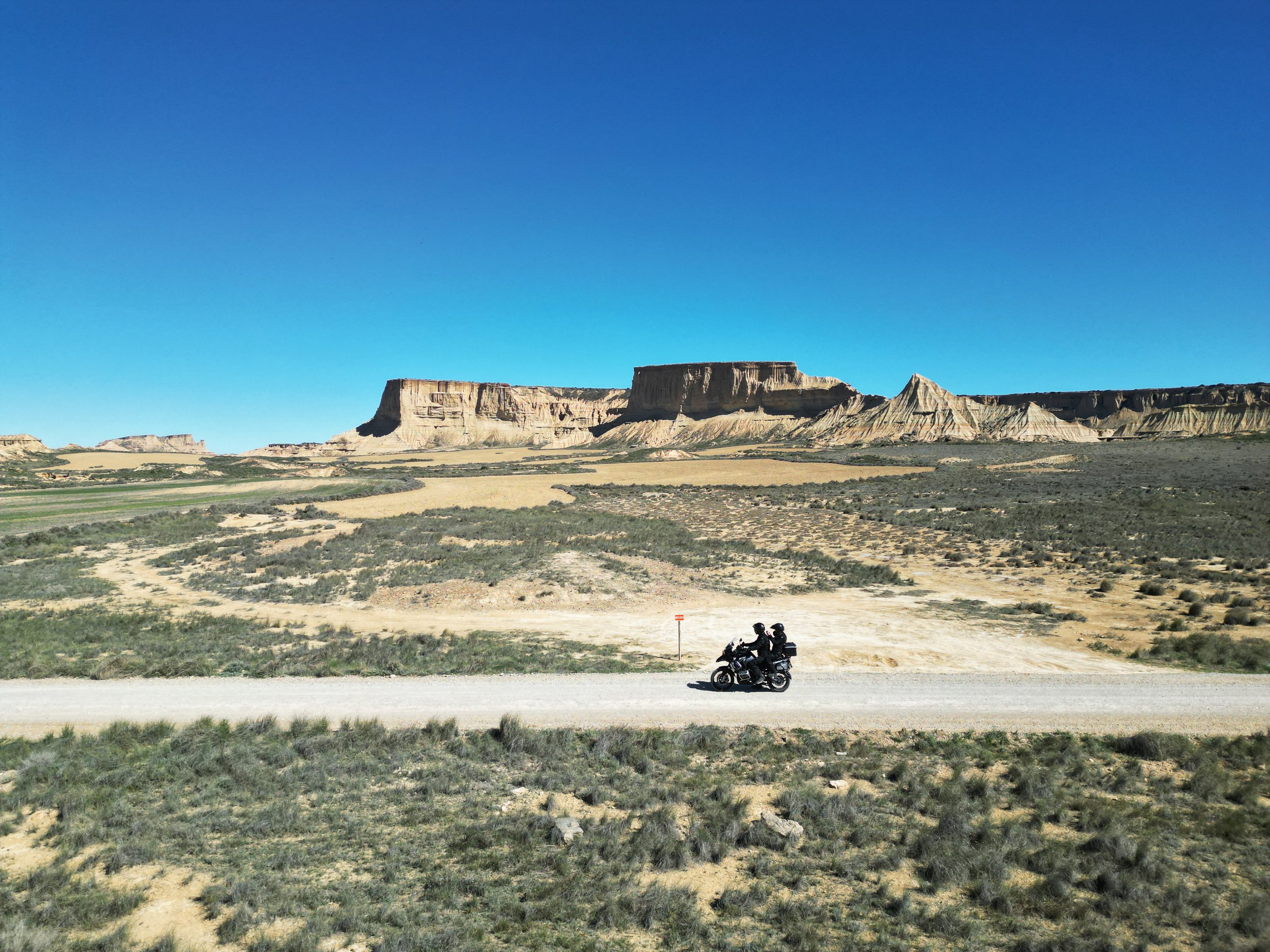
Heading South
Welcome to the
Heading South Tour
The Ultimate Spanish Road Trip around Switzerland, France, Spain, Portugal and Gibraltar!
Join us on an exhilarating journey as we set out to discover hidden Spain, far from the clichéd image of crowded beaches and resorts. With our R1250 GSA, a GoPro, a drone, and a sense of adventure, we embark on a 7500-kilometer tour from Basel to Gibraltar. From the beautiful coastal town of San Sebastián to the stunning desert-like landscape of the Bardenas Reales, our motorcycle tour takes us through breath taking terrain. We explore the undiscovered gems of Spain and Portugal, such as the Pico’s du Europa, Lisbon's historic streets, and the wild west of the Tabernas desert.
This captivating diary of our journey, complete with apes and charming towns, unveils the true beauty of Spain, Portugal and Gibraltar, countries rich in diverse landscapes, history, and culture, waiting to be explored.
The Motorway Slog
We have swum in the Dead Sea, walked the promenades of Beirut, ridden through the high Tatras mountains, drank coffee in Transnistria but we’ve never explored Spain, a country that has been on our doorstep, why? Well, the stereotypes have rung in our heads of overcrowded beaches, tacky resorts, and pool loungers but we decided to go in search of hidden Spain. The undiscovered, raw, unfiltered version of a country that has been over popularized since the 60s.
With hope, an R1250 GSA, a GoPro, a drone, we started with a motorway slog of 1100Kms from Basel to San Sebastian in the North of Spain. It appeared that no one had told the weather that the motorcycle season had started, with temperatures dropping to 5 degrees, heavy downpours, and strong winds; the journey to northern Spain had not gotten off to a discouraging start. Fresh from its first service, Sean was still getting used to the new features of our R1250 GSA. This bike had had a baptism of fire - only a few days old and already over 2000kms on the clock, none of which were in the dry.
Bay of Biscay
We pulled up to San Sebastián, a picturesque coastal town nestled on the shores of the Bay of Biscay in Spain's mountainous Basque Country. The salty breeze carried the scent of the sea, mingling with the aroma of freshly baked pastries from nearby cafes. As Sean parked our R1250 GSA, a wave of nostalgia washed over him. The last time he stood on these cobblestone streets was over 20 years ago when he rode pillion with his Dad on his Moto Guzzi California, and his older brother rode his Suzuki SV650.
Could this charming town have been the birthplace of his deep-seated love for motorcycle travel? He pondered the thought, gazing at the winding roads that disappeared into the lush green hills surrounding San Sebastián.
The town, with its blend of elegant Belle Époque architecture and modern beachfront developments, invited us to explore its every corner. Narrow alleys led to hidden pintxo bars, where the aroma of grilled seafood mingled with the lively chatter of locals and tourists alike. San Sebastián's beaches, renowned for their golden sands and waters, stretched along the coastline, inviting sun-seekers to bask in the warm Mediterranean sun.
We wandered along the iconic La Concha beach, its crescent shape framing the pristine waters of the bay. The rhythmic sound of waves crashing against the shore accompanied us as we strolled along the promenade, taking in the panoramic views of the surrounding hills. San Sebastián, often hailed as the culinary capital of Spain, tempted our taste buds with its world-renowned cuisine. We indulged in pintxos, the Basque Country's version of tapas, savouring each exquisite bite in bustling local bars.
As the sun began its descent, casting a warm golden glow over the town, we found ourselves perched on a cliff overlooking the bay. The twinkling lights of San Sebastián started to illuminate the evening, creating a magical atmosphere. With the sound of the sea in the background, Sean realized that this enchanting town, with its rich history, delectable cuisine, and scenic beauty, had not only fuelled his passion for motorcycle travel but had also become a cherished memory etched into his mind.
The Bardenas Reales
From San Sebastian, our journey took us to the Bardenas Reales, a desert-like region in Northern Spain that had always piqued our curiosity. We are seasoned travellers, so we tend to have a healthy scepticism towards destinations. With the power of Photoshop you never really know what you are riding into. However, as we approached the Bardenas Reales with the sun setting, our doubts were obliterated by the breath-taking scene before us. Sean steered our motorcycle off the main road and onto a gravel track, both of us perched on the bike, fully loaded and ready for adventure. The landscape that greeted us was nothing short of awe-inspiring. The tranquil yet majestic sunlight bounced off the red rocks, casting an ethereal glow over the entire area. In those moments, surrounded by the raw beauty of nature, the memories of cold, wet days faded into oblivion.
Our spirits soared as we watched the sun set into the desert like landscape; we were off to an exhilarating start! Deciding to make the most of our time, we opted to spend the night in the nearby town of Tudela, readying ourselves for an early start the following day.
Our trusty motorcycle that we had affectionately named ‘Shadow,’ carried us into the heart of the desert early the next morning, armed with only the essentials needed for our off roading desert adventure.
The Bardenas Reales proved to be a land of enchantment, boasting red earth formations and canyons that bore the marks of millennia-old natural sculpting. To our astonishment, this captivating region was not just a marvel to behold; it was also a protected national park that welcomed visitors with open arms. The main route, a 43-kilometer loop of gravel tracks, narrow bridges, and gentle inclines, presented one of the most exhilarating riding experiences we had ever encountered. Eager to immerse ourselves in this desert oasis, we set out early, determined to beat the campervans that stirred up dust into the air. As we ventured deeper into the desert, the lunar-like landscape unfolded before us, each turn revealing new wonders. We simply could not get over the fact we were only 70km from the Pyrenees.
For the first time since buying our bike, Sean engaged Enduro mode, contemplating whether our 80/20 tires would endure the challenging terrain. Much to our delight, they exceeded our expectations. With Emily perched on the pillion seat, capturing the mesmerizing landscape on camera, we rode past fellow early risers with smiles beaming in our helmets. We didn't get very far, stopping every few kilometres to take photos of the geological formations and of course the park's most famous rock The Castildetierra that we named ‘the nipple’.
The gravel was well graded and easy to navigate, however when we took the optional offshoot from the main loop the gravel got deeper and a little more difficult with the front end making its own route (just something to keep in mind). We spent the full day exploring the park and I’d recommend anyone touring Spain to set some time aside to really make the most of it. It’s such an awesome place and one we will definitely be returning to.
Reluctantly saying goodbye to the gravel tracks, we resumed our journey, heading back to civilization to Bilbao, our next destination.
Bilboa And Beyond
Bilbao, nestled in the heart of the Basque Country, seamlessly marries modernity with cultural heritage. The city's crown jewel, the Guggenheim Museum, designed by Frank Gehry, stands as a testament to contemporary architecture and is a place Emily had wanted to see for many years. We stayed in a small hotel just outside the city and woke to grey skies as we set out to explore Bilbao.
We grabbed coffee and walked towards the museum's titanium-clad curves. They seems to create a mesmerizing play of light, setting the stage for a world-class collection of contemporary and modern art within. The surrounding area of the museum is home to multiple outdoor art pieces, Emily’s favourite was the sweet smelling puppy that sits outside the museums entrance.
After a morning enjoying the Art and great coffee we walked to Casco Viejo, or the Old Town, that really unveils Bilbao's historical charm through a maze of narrow alleys and picturesque squares. Make sure you wear comfortable shoes to navigate the cobblestone streets effortlessly, and immerse yourself in the local cafe scene. We highly recommend Cokooncafé! Although our time in Biloba was short the city was a great stop on our tour and seeing the Guggenheim Museum was a great start to our tour.
Picos du Europa
Having had our fill of cities we planned to have the next few days in the northern Spanish national park of Picos du Europo and ride the N-625.
The skies had cleared and the roads were dry as we set off into the Antabrian Mountains. The mountain range offers a captivating landscape with its soaring peaks, meandering valleys, and charming villages, providing the perfect setting for our adventure. Venturing along the renowned N-621 road, or "Ruta de los Cares," each twist and turn reveals breath-taking vistas. There are countless routes, tracks and road combinations you can do in this region but rest assured all of them will leave you wanting a few more hours of daylight. Weather conditions can be unpredictable, so we make sure to be well-prepared for the diverse terrain.
In medieval times, the Picos de Europa served as a natural barrier between the Christian kingdoms to the north and the Muslim-controlled territories to the south. The strategic importance of these peaks is evident in the numerous fortifications and watchtowers that dot the landscape, reflecting the historical conflicts and shifting borders in the Iberian Peninsula.
The Picos de Europa also served as a refuge for local communities during periods of invasions and turmoil. Over the centuries, the region has been inhabited by shepherds, whose pastoral lifestyle has shaped the landscape and left an indelible mark on the local identity.
In the 20th century, the Picos de Europa became the first national park in Spain, established in 1918. This designation aimed to protect the diverse flora and fauna inhabiting the region, including the iconic Cantabrian brown bear and Iberian wolf.
As the sun started to set behind the mountains we arrived at the Lake Riaño and found a camp site originally named ‘Camping de Riaño’. We pitched our tent, fired up the stove and strategically positioned Shadow to block some of the wind on our tent and settled in for what would be a very cold night. When we arrived the temperature was in its mid teens but during the night it plummeted to -2! It’s nights like this that we were glad we opted for the warmer sleeping bag!
The next morning we awoke in a frosted tent, cold and grumpy which would soon melt away as the sun arouse.
Picturesque Porto
Over the next few days we rode in the direction of Portugal stopping at some off the beaten track locations like Esquella - an abandoned manor house with a spooky past.
We crossed the border into Portugal via a small border town waving goodbye to Spain for the next few weeks. Making the most of the good weather we sought out some twisty mountain passes and headed in the direction of Porto. Passing through many abandoned mountain villages along the way. We stopped at Porta de Lindoso and then took a leisurely ride through Peneda-Gerês. Next we went onto see the Miradouro Voltas de São Bent, a road that’s worth the detour and ended our day at the very popular Cascada de Varzeas. Watching the water trickle through the rocks down into small pools as locals played in the waters. The sun was setting and we set off in search of Porto.
Porto is known for its port production and fine architecture, when we arrived we were shocked however to see so much of the iconic buildings crumbling. We spent the next two days exploring the city soaking up its electric vibes and great food. It’s evident that the past few years have not been kind to such a culturally rich city yet we stayed optimistic that the restoration work would continue. We have written a full Blog of Porto as it deserved - You can check it out here!
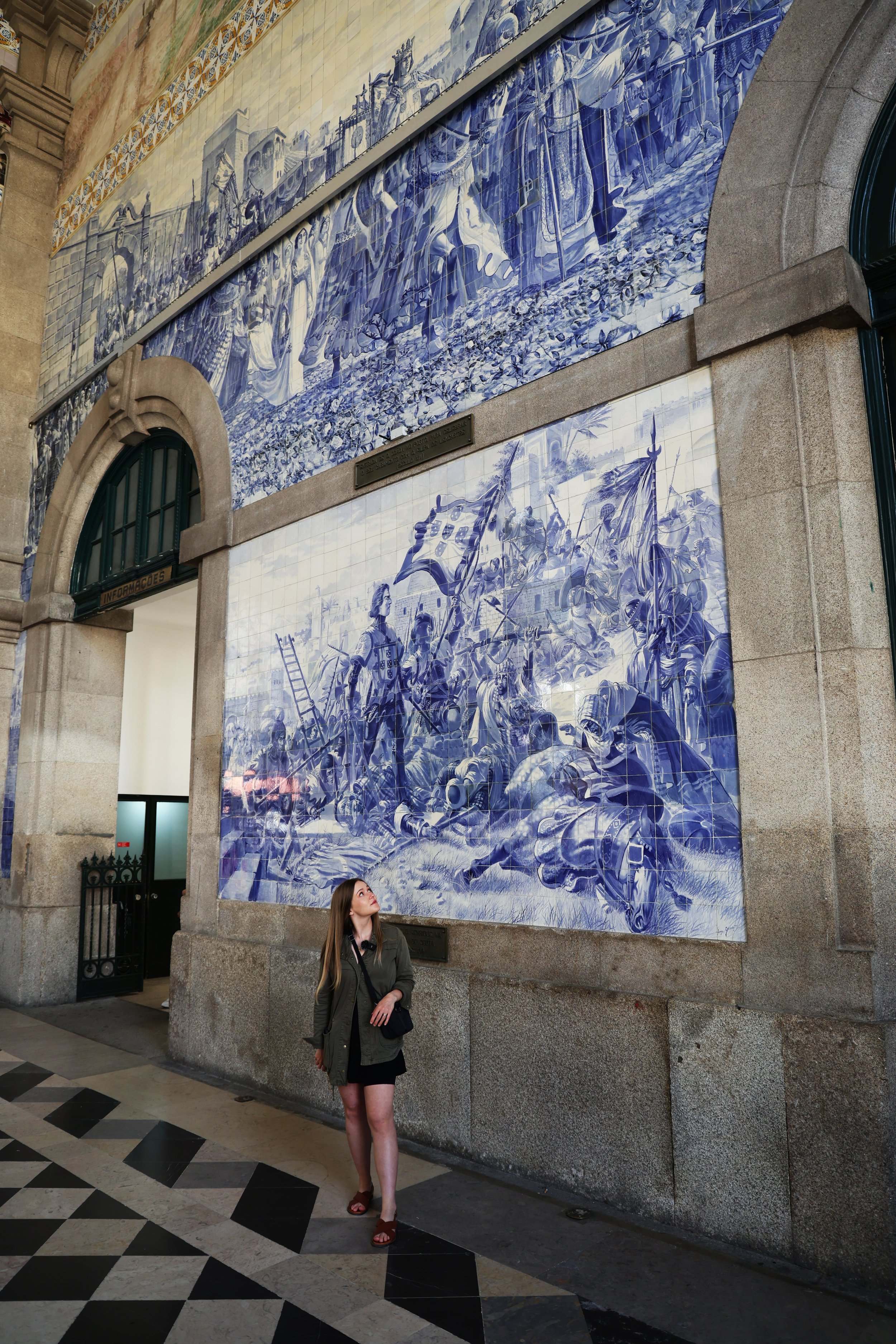
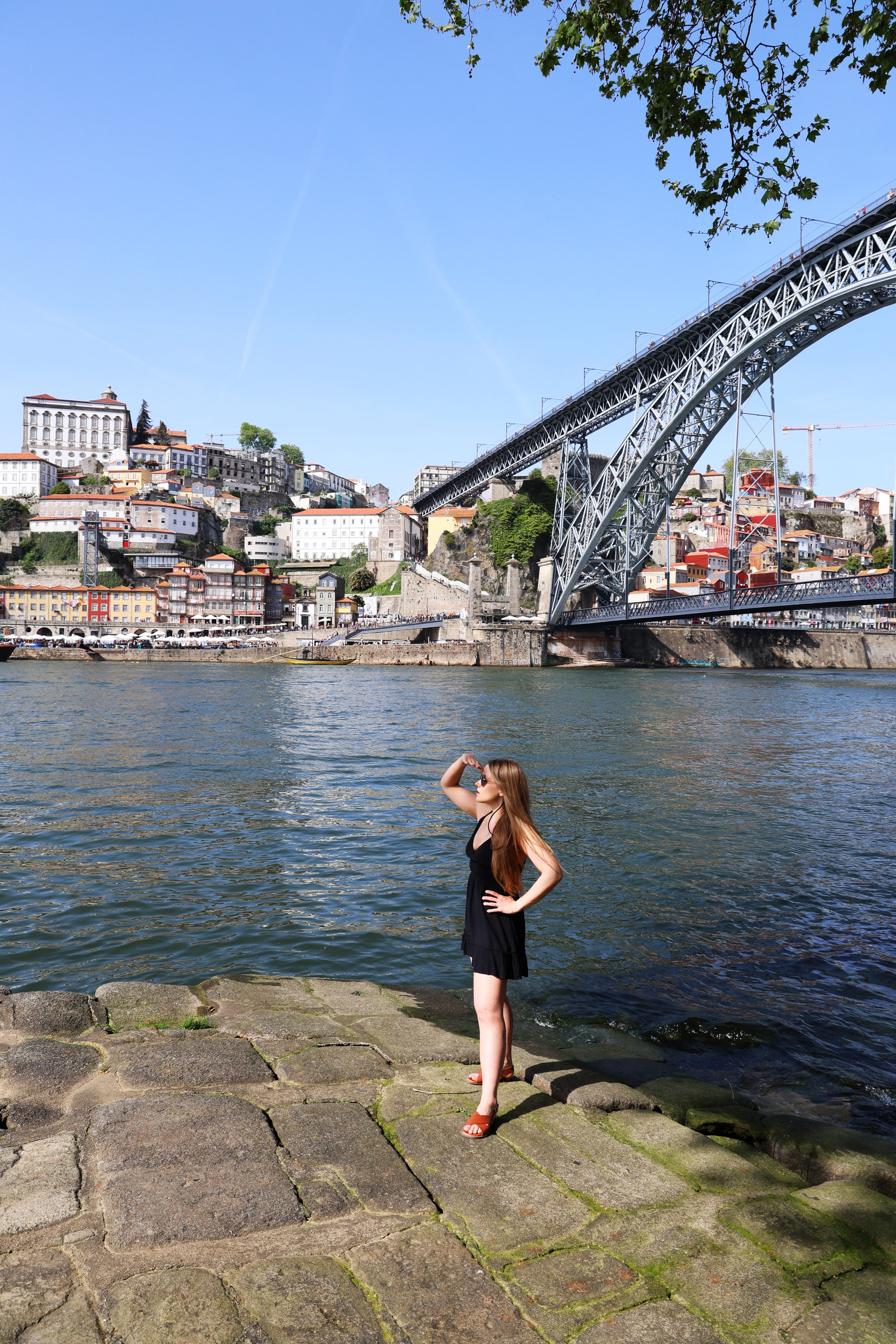
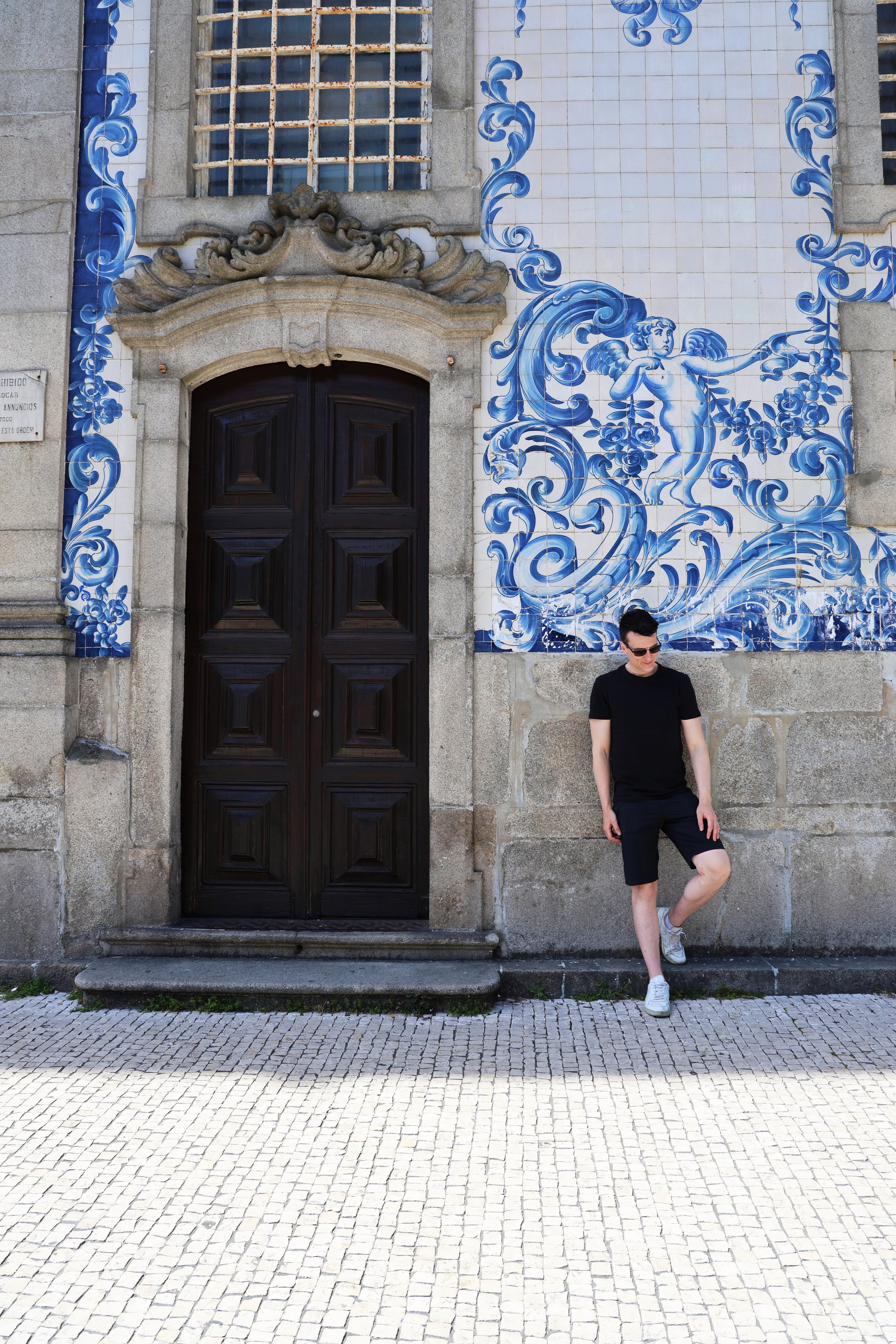
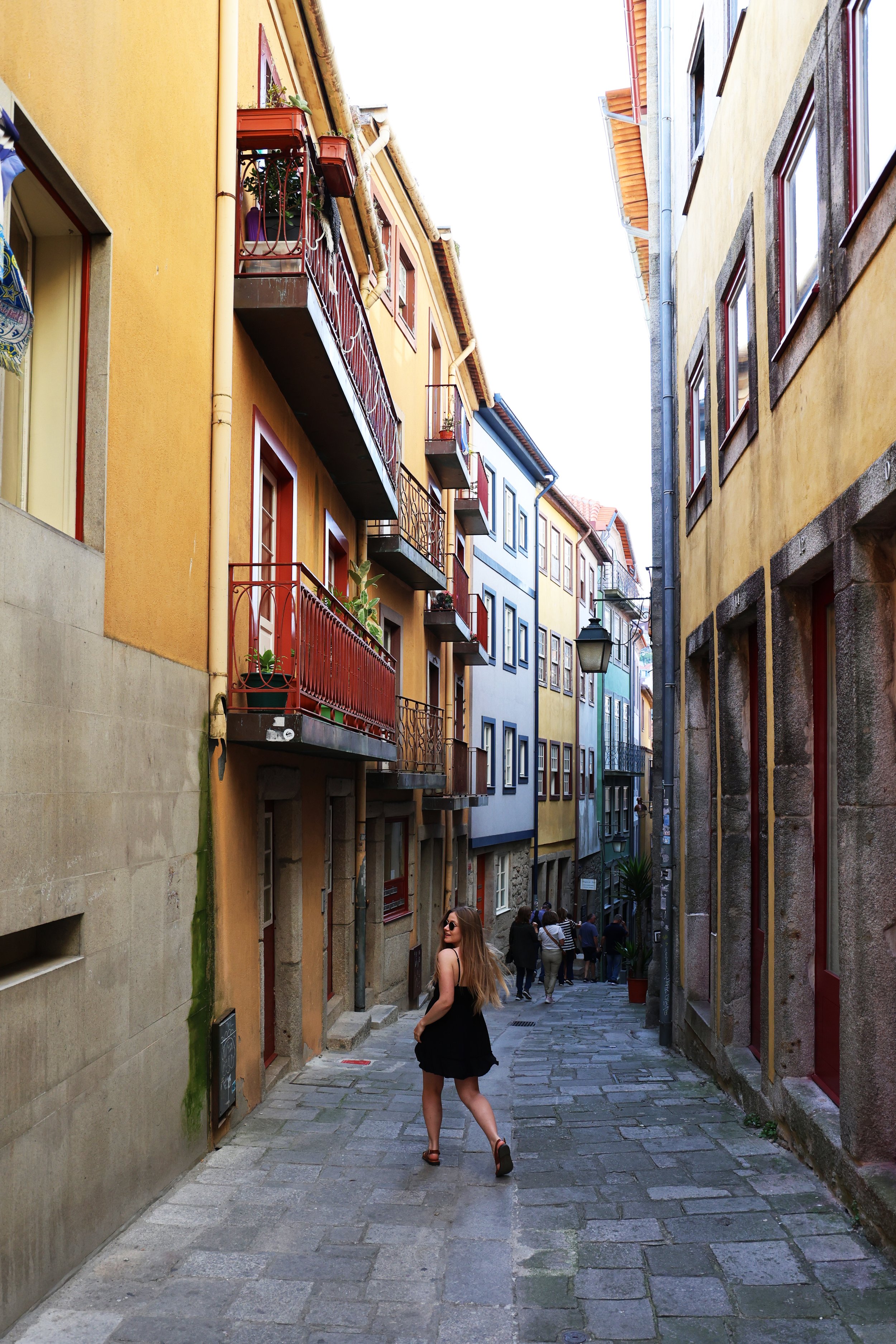
A Night In The Portuguese Mountains
Rested and ready we set off into the Portuguese mountains, an area that’s not often explored as most stick to the cities and beach areas that we often ride past.
Our first stop was The Serra da Estrela Tower is located in the Serra da Estrela mountain range, specifically in the district of Guarda. It is not only the highest point in Portugal but also the highest in the entire Iberian Peninsula, reaching an elevation of 1,993 meters (6,539 feet). The primary purpose of the Serra da Estrela Tower is to serve as a telecommunications tower, broadcasting radio and television signals. However, due to its location and impressive views, it has also become a popular tourist attraction.
We took the N339 road, which is known for its challenging twists and turns, making it an exciting ride for all motorcycle enthusiasts. The road offers breathtaking views of the surrounding mountains and valleys, making it a Portugal must-ride. When you reach the top you have a small market offering everything from socks to Ginginja and two radar domes. Typically open all year round with the occasional closure in winter if there is too much snow.
After reaching Serra da Estrela we dropped down the other side of the pass where the road cuts through the rock and headed towards the capital of Portugal, Lisbon. Our route to Lisbon took us through Janeiro de Baixo a beautiful region with amazing roads, we decided to stop for the night at a small campsite pitching our tent near the river. The next day we woke at sunrise to birds chirping and the sound of running water. Emily made breakfast as Sean packed up Shadow and we continued our route to Lisbon via Nazaré.
Nazaré, a charming but busy town in Portugal, has a history tied to the sea and local legends. Named after a chapel honouring Our Lady of Nazareth, it thrived as a fishing village and became a tourist spot with the arrival of the railway in the 19th century. Today, Nazaré is famous for its huge waves, the underwater Nazaré Canyon, just off the coast, funnels and amplifies ocean swells, creating colossal waves that can reach heights of over 100 feet. The town's history and traditions, coupled with its modern-day reputation for extreme surf, draws visitors seeking both a beach holiday and an adrenaline-charged experience on the wild Atlantic waters.
Lively Lisbon
After riding through major capitals like Rome and Paris we expected Lisbon to be no different with hectic streets, impatience car drivers and the like. To our surprise the approach to the city was calm and its drivers were relatively chilled and courteous. Which is just as well as Em’s directions from the back seat had us down the main street! With no secure parking there was only one option - chain the bike to the railings in front of the hotel. Lisbon is a vibrant city and one we had explored before, so we hit the main sites, stocked up on food and continued the journey south. We have written a full Blog about Lisbon as it deserved - You can check it out here!

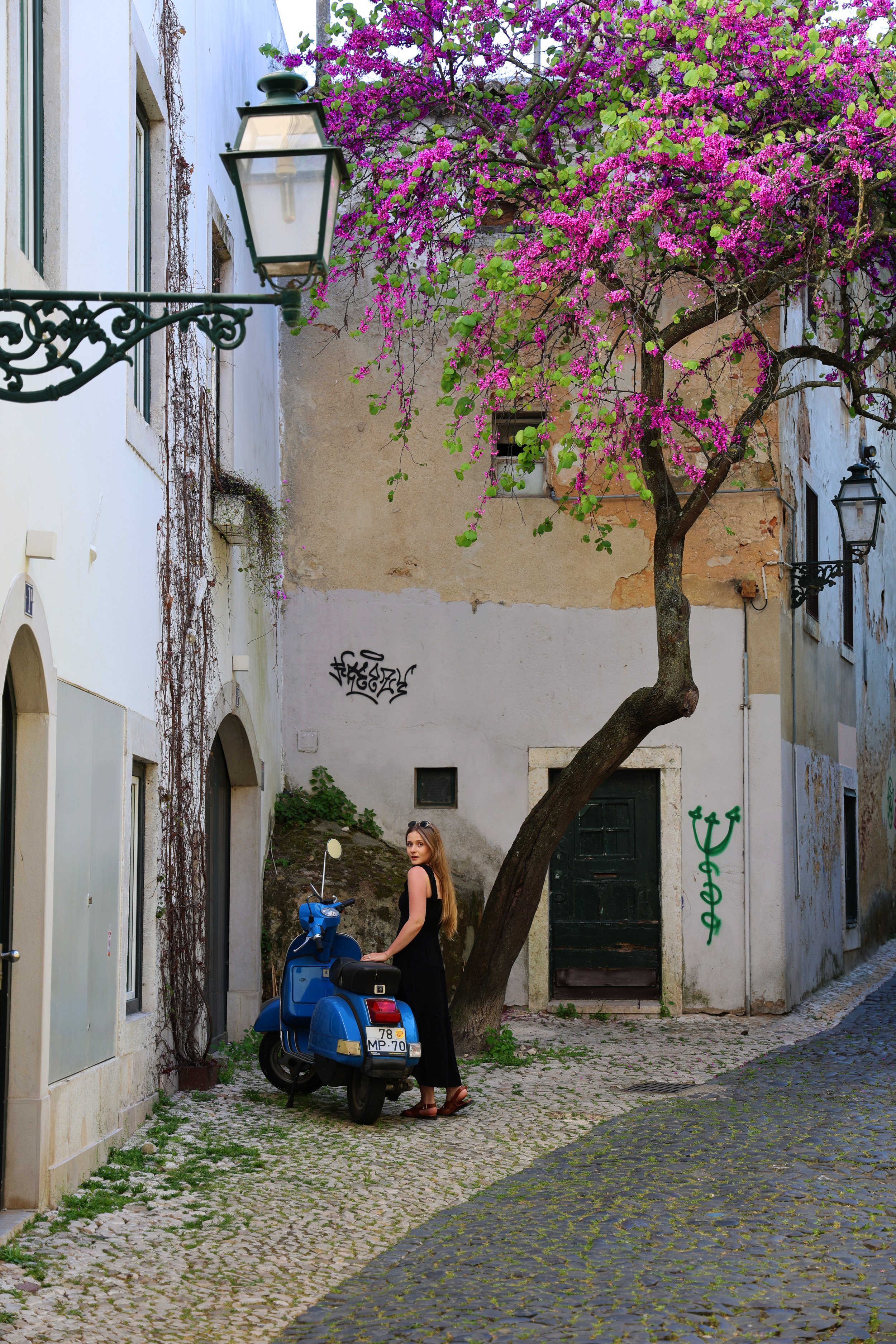

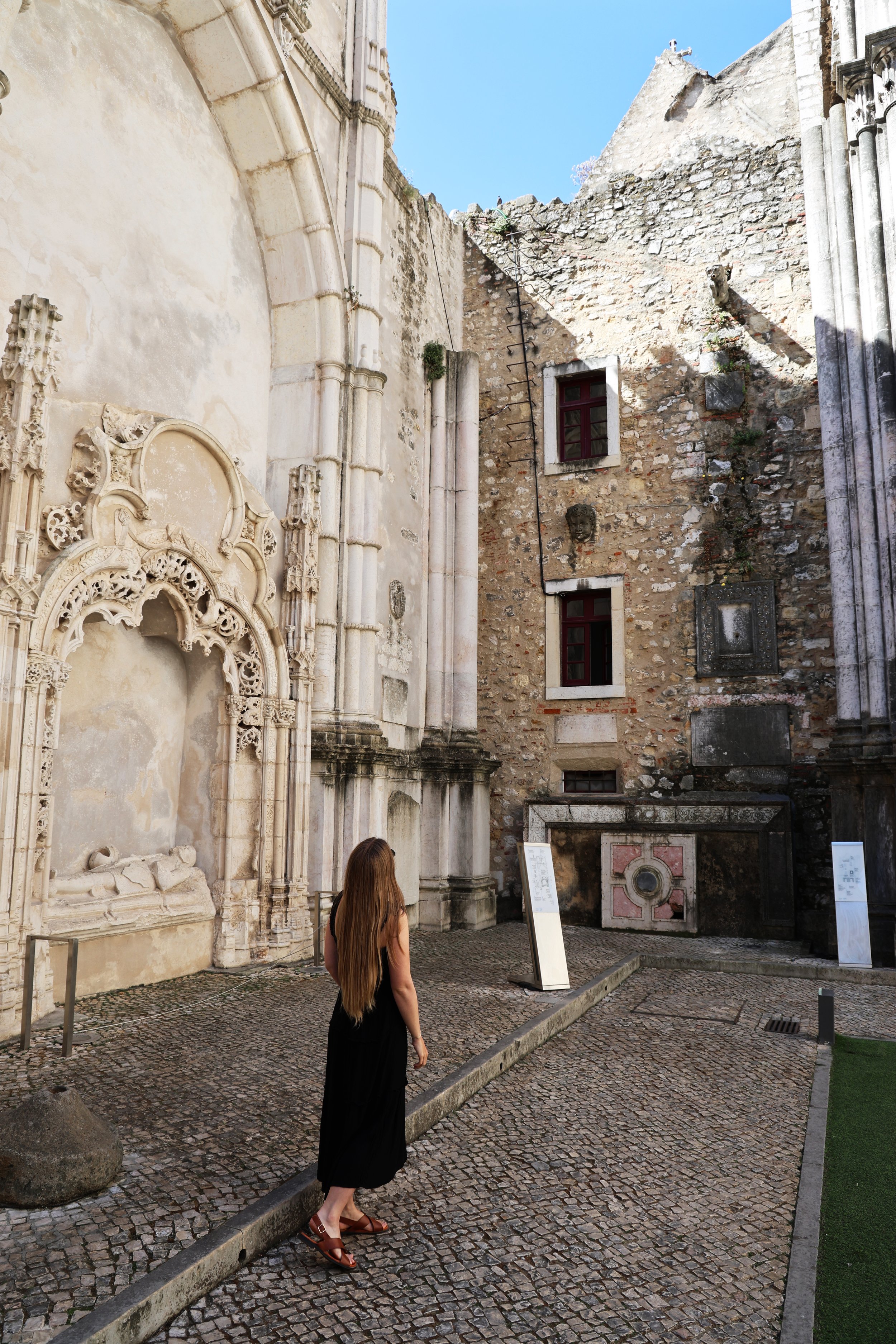
The Real Algarve
From Lisbon, we rode to the Algarve, a scenic coastal region in Southern Portugal known for its golden beaches, picturesque villages and rugged cliffs. When we had told friends and family about the tour everyone had said about how amazing this region is, so our expectations were high but quickly we realised this region was not for us.
Even though the natural beauty of this area is really quite something with the different beaches and rocky coast it had us both wishing for more. We had envisioned a coastal ride like that of Croatia but found more often than not the road was set back from the coast with small offshoots that accessed the overpopulated beaches.
The Algarve has a rich history dating back thousands of years. Phoenicians, Carthaginians, and Romans were among the early settlers, leaving traces of their influence in archaeological sites throughout the area. The Moors, who ruled from the 8th to the 13th century, significantly shaped the Algarve's culture and architecture. The region was eventually reconquered by the Portuguese during the Christian Reconquista. In the modern era, particularly since the 20th century, the Algarve has transformed into a popular tourist destination, celebrated for its stunning beaches and towns but as the years have continued on some of this region’s charm has been washed away with large tourist enterprises moving in and seemingly never ending hotels. Tourist areas have had large sums of money injected in, however this has left the lesser desirable towns infrastructure crumbling and in dire need of restoration.
We pressed on through run down towns, passing buildings with facades clinging on to by gone years of grandeur. We kept riding hoping to find somewhere special but with each passing town our helmet conversation said the same "once upon a time this place must have been beautiful".
We cling to hope that we missed the good parts but if you are wanting a beach, a sun lounger and a beer the Algarve might be the place for you. However we kept riding late into the night until we found what we think is the hidden gem of the Algarve.
Tavira greeted us with painted facades and the authentic coastal town feel that we had envisioned the Algarve to be. We found a small family run hotel right on the promenade front, quickly changed out of our motorcycle suits and headed out into the town. We started by exploring its ancient buildings and churches while enjoying the coastal beauty this little sea side town had to offer. Tavira's mix of history and natural beauty makes it a delightful place to discover and was our highlight of the Algarve.
Tavira has a long history interesting history. It began with the Phoenicians and later thrived during Roman times, leaving behind bridges and buildings. The Moors took over and built structures like the Moorish Castle and the Roman Bridge. Over the years, Tavira grew as a trading port, with a strong economy based on salt and fishing. Challenges like the 1755 earthquake affected the town, but Tavira continued to be a significant part of Portugal's history.
After spending the morning exploring we jumped on a boat to take us out to Praia de Tavira a stunning beach only accessible by a short ferry ride from Tavira, the journey adds a touch of adventure as you traverse the calm waters of the Gilão River. If you are based in Tavira, the summertime service departs from Tavira harbour. The fare is €1.30/€2.00/€0.90 (single/return/child return), and takes 20 minutes to travel down the Gilão River.
Once we set foot on Praia de Tavira, we were greeted by golden sands stretching along the shoreline. The beach is part of the Ria Formosa Natural Park, a protected area. The landscape is dotted with sand dunes and bordered by the crystal-clear waters of the Atlantic Ocean. One of the unique features of Praia de Tavira is its spaciousness, allowing visitors to find a quiet spot even during peak seasons. The beach is well-equipped with amenities, including beachside cafes where you can savor local cuisine and refreshing drinks. Praia de Tavira offered us a perfect blend of relaxation and natural beauty, making it a must-visit destination when exploring the Algarve.
Sunsets In Seville
Our next stop was Seville, we crossed the bridge back over into Spain and after a short, uneventful and hot ride we arrived in this charming city known for its flamenco music and Moorish architecture.
Seville is the capital of the Andalusia region in southern Spain. Originally founded by the Romans, the city later flourished under Moorish rule, contributing to its unique blend of architectural styles. The iconic Alcazar of Seville, a royal palace initially constructed by Moorish rulers, stands as a testament to this period. Seville played a pivotal role during the Age of Discovery, as it became a major port for trade with the New World after Christopher Columbus's voyages. The Giralda, originally a minaret, was converted into a bell tower for the Seville Cathedral during this time and remains a symbol of the city. In the 17th century, Seville experienced economic decline, but the 1929 Ibero-American Exposition marked a resurgence, leading to the construction of landmarks like Plaza de España.
Emily was eager to see Seville as it was our first time in the city, so we set out to see all the main sights. First on the list was The Plaza de España, designed by Aníbal González. We decided it was best to experience this at sunrise without the hordes of other tourists so we arrived just as sun was rising and wow the plaza did not disappoint. The semi-circular features ceramic tilework that narrates scenes from Spanish history, with bridges representing ancient kingdoms. We walked hand in hand around marvelling at the tiled alcoves representing Spanish provinces and the overall grandeur of this beloved space. Ascending the stairs to the second floor for an elevated view of the plaza, we were serenaded by a violinist playing beautiful melodies, adding the perfect touch to our experience. The vista from above was truly breath-taking.
The Alcazar of Seville and the Seville Cathedral were next on the list they really showcase the intricate interplay of Mudejar, Gothic, Renaissance, and Baroque styles. The Alcazar of Seville is a very popular destination and one you must book in advance.
Strolling through the charming streets of Seville is like navigating a living tapestry of history and culture, with every step revealing architectural wonders and hidden gems. The city's vibrant atmosphere, lively streets, and the inviting aroma of local foods create an unforgettable experience.
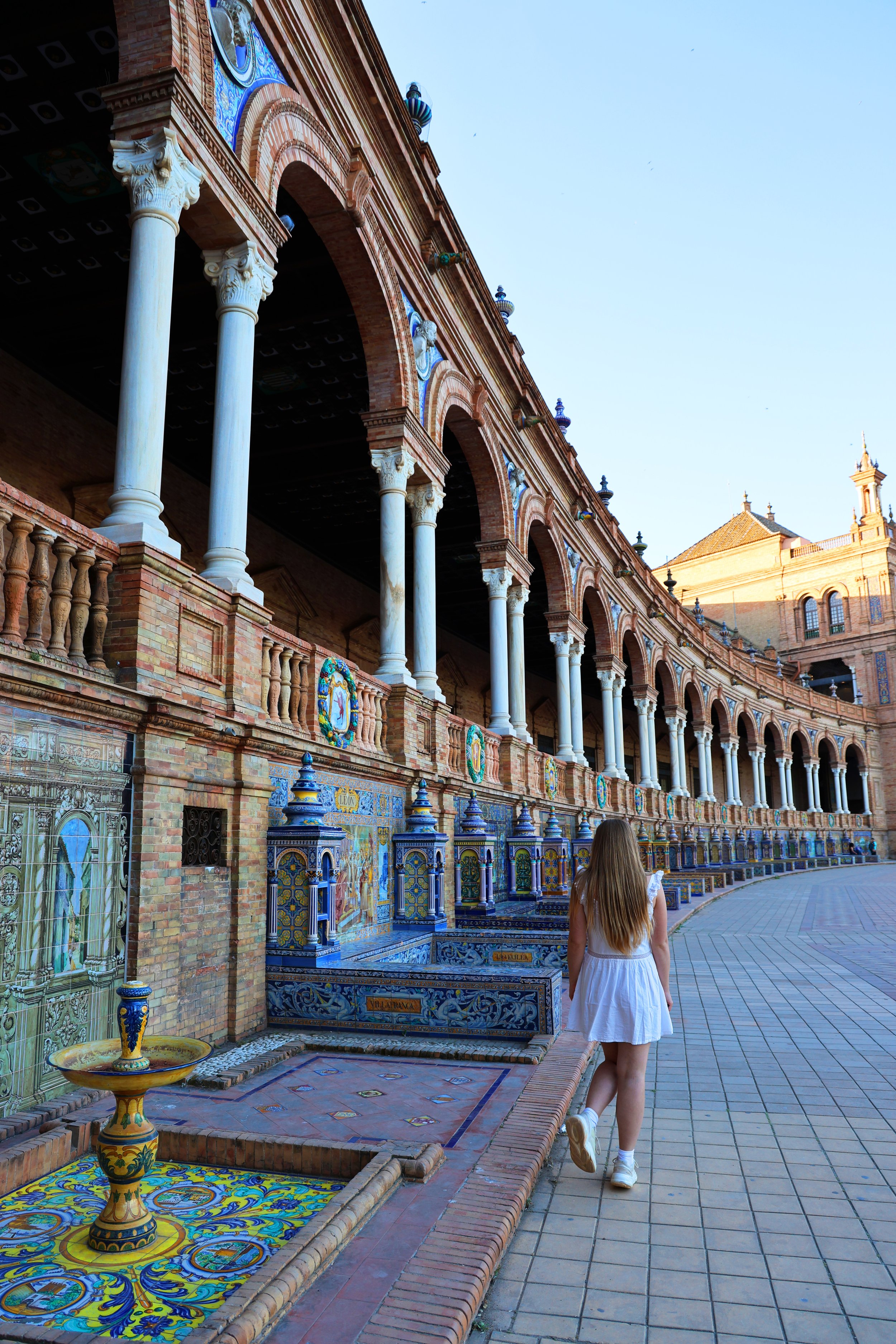
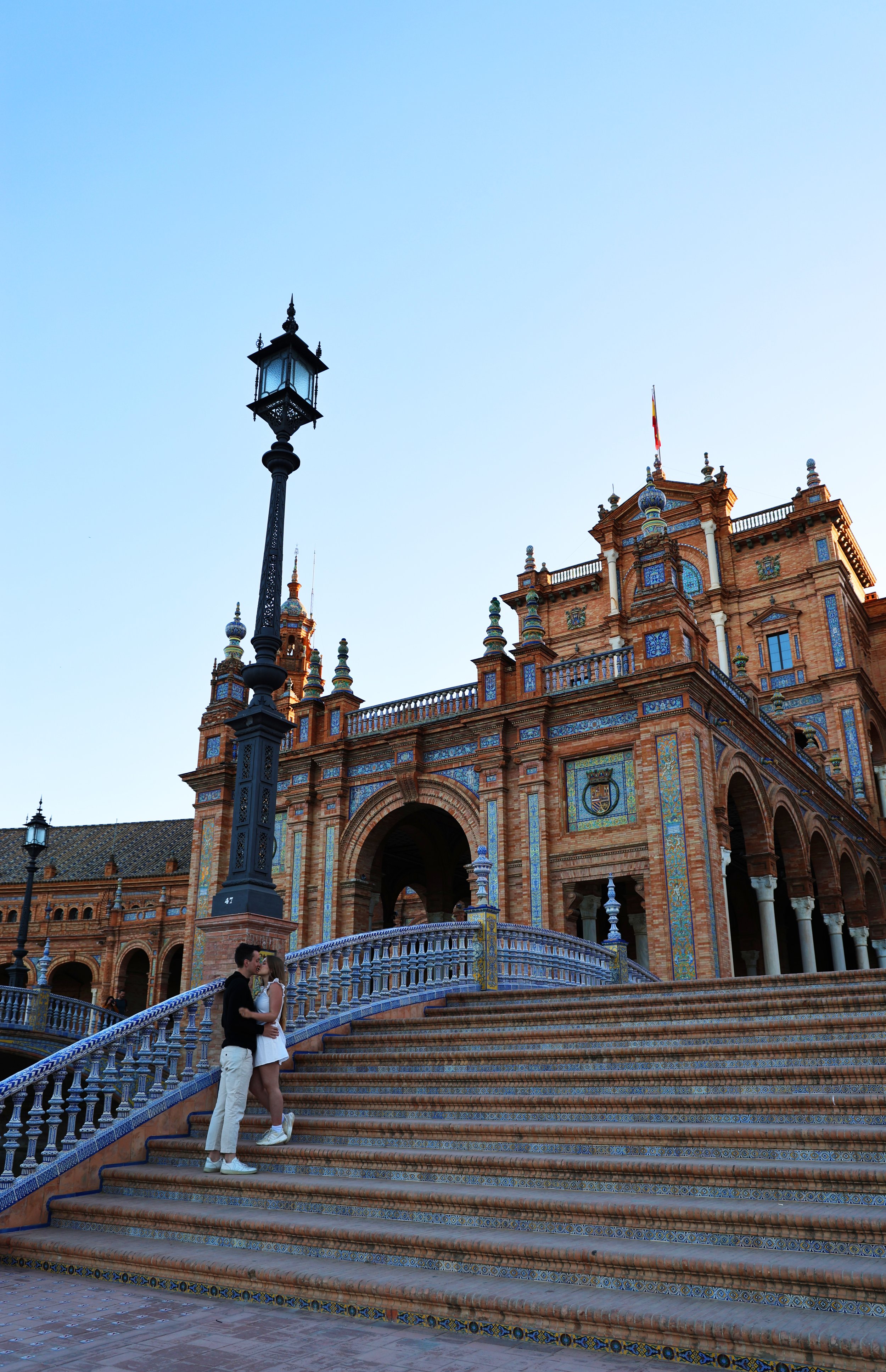
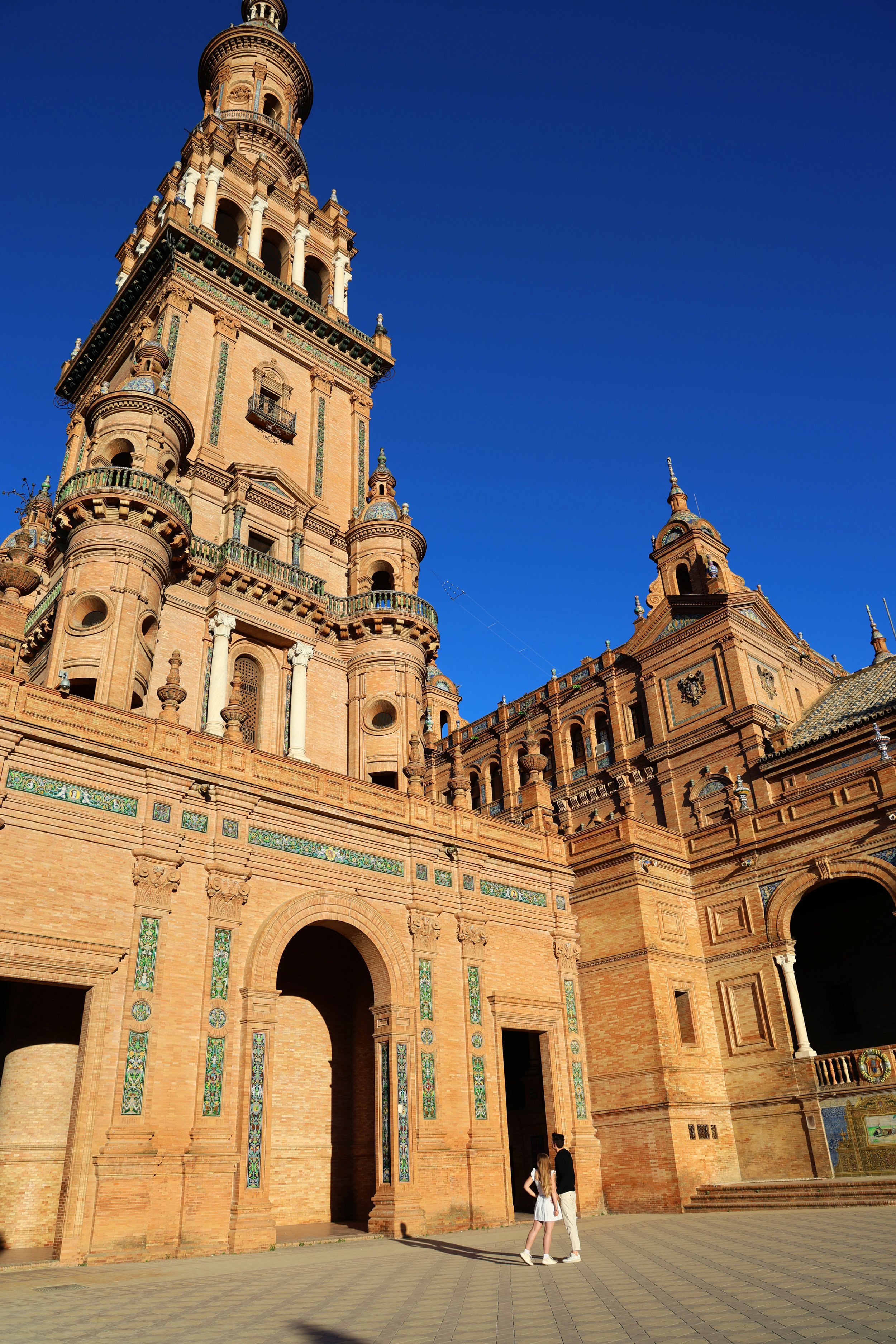
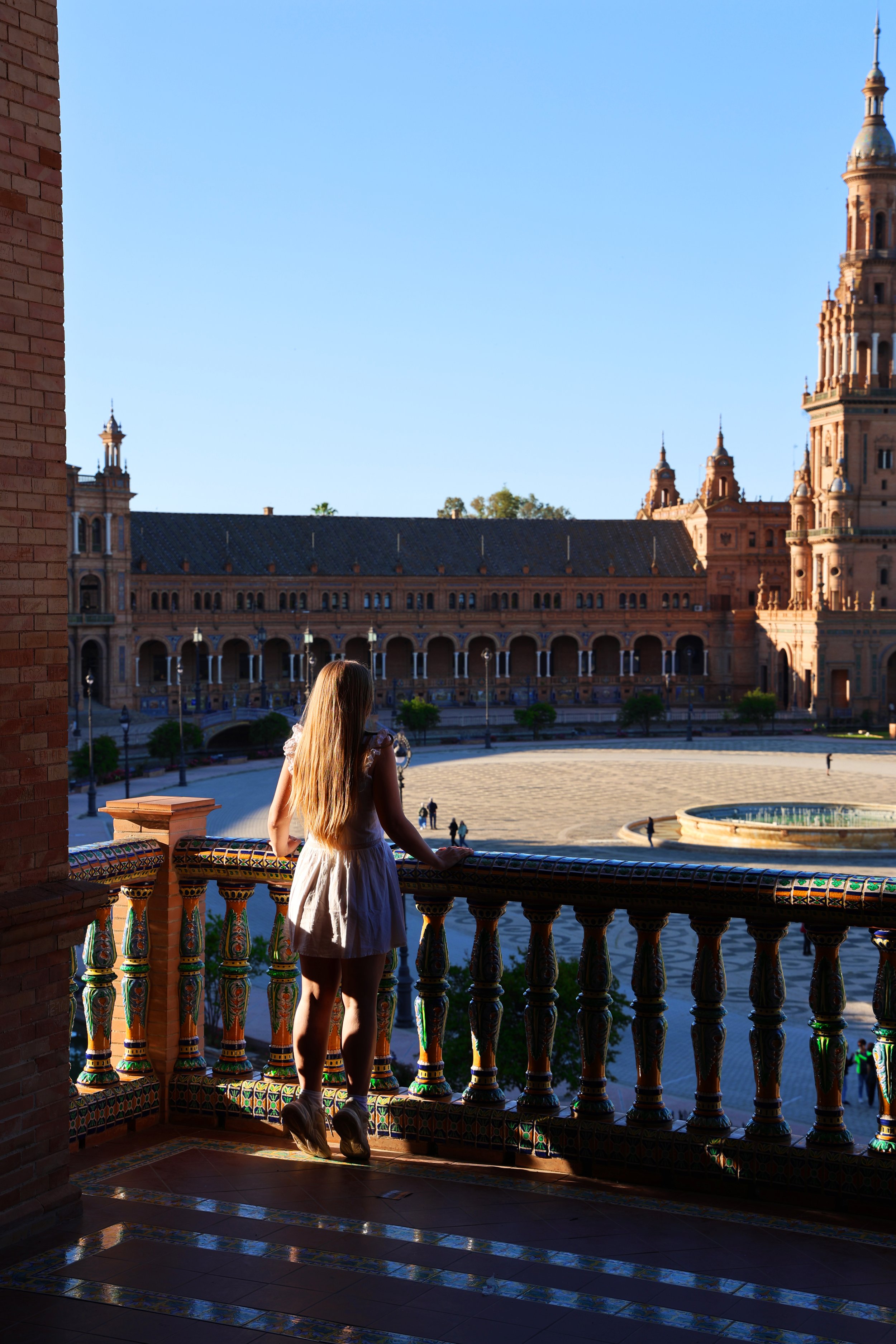
The Rock
Eager to get to the most southernly point on this tour we headed south for the last time to Gibraltar, a British Overseas Territory located at the southern tip of the Iberian Peninsula.
Nestled at the southern tip of Spain, Gibraltar is a tiny territory with a giant history. Picture this: ancient Phoenicians, Romans, and Moors all called it home at some point. Fast forward to 1704, during the War of Spanish Succession, when Gibraltar was snagged by an Anglo-Dutch crew and officially handed to the Brits in 1713. The Rock of Gibraltar became a military superstar, playing a crucial role in battles and conflicts over the centuries. Tunnels and forts were built like puzzle pieces into the rock, making it a military marvel.
In the 20th century, Gibraltar found itself in the spotlight of Anglo-Spanish debates. But guess what? The people of Gibraltar have consistently said, "Thanks but no thanks," in referendums, choosing to stick with Britain. Today, this little Rock is a cool blend of British and Mediterranean vibes.
As we approached The Rock, skipping the que to the rather strict border control, we proudly waved our British passports and rode around the limestone rock to Europa Point as the famous lighthouse came into view we pulled over to gaze out across the Gibraltar straight. As the salty air filled our lungs we breathed a sigh of relief, we had reached our goal. Taking a moment to take in the views of North Africa and the Rif mountains of Morocco we looked at each other with that knowing look that we would soon be exploring this vast continent for ourselves.
We stayed at The Rock Hotel in Gibraltar opting for a little luxury to celebrate our accomplishment of reaching the bottom of Europe. The hotel, perched on the Rock of Gibraltar, was not just a place to stay but an experience in itself.
From the moment we walked in, the colonial-style architecture and the rich heritage of the place were evident. It's hard not to be impressed by the panoramic views of the Bay of Gibraltar and the surrounding landscapes that greeted us. The Rock Hotel has a rich history dating back to 1932 when it first opened its doors. Over the years, it has hosted numerous notable guests, including Winston Churchill, who frequented the hotel during his stays in Gibraltar.
We spent the evening in the town dining on chips from the local fish and chip shop, watching the sun setting over the crossroads of Europe and Africa.
The next day we woke to a ‘Bash…Bang...Bang…..’ a wake up call that we never requested. Now we had been looking forwards to getting close to the Barbary Macaque Apes but we didn’t expect them to offer a room service as one occupied the balcony, thank goodness we had slept with the doors shut. We started our day with a buffet breakfast and wandered through the botanical gardens to the cable car.
The cable car journey to the Rock of Gibraltar was a pricey but worthwhile excursion. We opted for the Cable Car One Way and Nature Reserve package, and although the ticket prices seemed a bit steep—£34.50 for adults, £21.00 for kids, and £33.00 for seniors or students, the views we enjoyed made it all worthwhile. As we made the 6 minute journey to the top, the landscapes unfolded before us, revealing the sheer beauty of the surroundings. While there was the option to pay a few extra pounds for a return trip, we decided walk down the rock.
After reaching the top, we embraced the adventure of finding the famous apes, after reading the many warning signs about the apes we had a little apprehension about getting too close or if we would even see them at all. Within a few minutes walk from the cable car we had already seen several apes. Its the most wonderful experience getting close to these wonderful animals but do be warned they are still wild animals so read the signs and be respectful. We have written a full Blog about Gibraltar - You can check it out here!
The decision to skip the return cable car allowed us to explore more and, eventually, we found ourselves in the heart of the town centre, ready to savour a delicious lunch and soak up the local atmosphere. We returned to the hotel, put of our motorcycle suits in the 30 degree weather and did a few laps around the coast then set off for a sunset ride through Andalusia to the famous mountain top city of Ronda.
Romantic Ronda
Ronda is undeniably stunning, especially when explored during the early morning or late afternoon, avoiding the crowds that often plague popular destinations. This flexibility is the beauty of motorcycle travel—being able to chart our own course on our timetable. Arriving late in the evening, we were fortunate with finding the last available hotel room, offering a breath taking view of Puente Nuevo, the iconic bridge spanning the gorge that links the town's two sides.
The history of Ronda, Spain, is a tapestry woven by various civilizations, from Celts and Romans to Moorish rule and the Reconquista. In the 18th century, economic prosperity led to the construction of the iconic Puente Nuevo. Bullfighting is deeply ingrained in Ronda's cultural identity, evident in the historic Plaza de Toros, one of Spain's oldest bullrings. While we may not endorse the sport, exploring the bullfighting ring provided insight into the city's history and culture.
For literary enthusiasts like Emily, following in the footsteps of Ernest Hemingway, who drew inspiration from Ronda's streets, added an extra layer of intrigue. Every turn in Ronda unveiled something new, from the must-see attractions of Plaza de Toros and Puente Nuevo to the postcard-worthy scenes at every vista. The town's timeless allure, blended with a palpable sense of history and culture, cast a romantic spell on everyone. Departing early the next day, we set our sights on Malaga in pursuit of great roads.
Malaga is approximately an hour and a half ride away from Ronda making it a popular day trip for those basing themselves in Malaga. We took the slightly longer route that past by the picturesque reservoir of Embalse del Guadalteba. There’s countless gravel tracks taking you near the turquoise coloured waters, we pulled off the main road and headed down one of the tracks stopping at a plateau with views over the glistening water. Here we cooked lunch and spent some time sitting in the sun and taking some time to immerse ourselves in the tranquillity. This was short lived as we suddenly got surrounded by hundreds of sheep being herded by their shepherd. We packed up the bike again and continued our journey in the direction of Malaga avoiding the motorways and passing over the rolling hills in the region. We arrived in Malaga just as the sun was going down and navigated our way through the hectic streets of the city to our hotel for the night.
Rested from an early night we arose early to explore the city of Malaga before the scorching heat of the midday sun enveloped the city.
Wild Wild Spain
Heading further North past Malaga through the Sierra Nevada National park, we stumbled across the wild west located in the Tabernas desert. The rugged landscape, reminiscent of classic Western settings, has served as the backdrop for numerous iconic Western films. With its vast stretches of dry terrain, sun-scorched mesas, and dramatic canyons, creates an authentic frontier atmosphere. Where you can actually explore preserved film sets, complete with saloons, wooden facades, and dusty streets, offering a interesting although somewhat tacky experience. We arrived at one of the filmsets greeted by middle aged men dressed up as cowboys, we wandered into the saloon and then got chased out by the sheriff and his deputy after Sean rode Shadow around the set. This isn’t something we would detour for but it was on our way to one of the best roads in Spain.
Which led us nicely onto one of the highlights of our motorcycle tour, the Alto Velefique Road, which is considered one of the best motorcycle rides in Spain! Located in the Almeria Province it has often been referred to as the ‘Stelvio of Spain’, some 25km long and boasting 29 hairpin turns with a gradient of up to 17% this challenging road provided an exhilarating ride. We stopped at the vantage point at the top where Emily told Sean he needed to ride the pass again so she could take some photos, it’s times like this that Sean just does as he’s told! Sean wrote a full Blog about this epic road - You can read it here!
Heading Home
We embarked on our northern journey, following the coastal road along the Mediterranean. We savoured the breath taking views of the sea, bypassing beach resorts and lively party towns, yearning for the serenity of less-travelled paths. Progressing past Alicante and Benidorm, we aimed for home, covering 500km each day on expansive motorways, with a brief stop for a night by the beach. Navigating around Barcelona, we stumbled upon a fantastic market on the city's outskirts for lunch. Pressing on into the night, we crossed the border back into France. Although the French motorway left much to be desired, it was a necessary route as we approached our Swiss home. Taking a slight detour around Lake Geneva, we found ourselves back home before we knew it.
Our motorcycle tour of Spain, Portugal, and Gibraltar was an unforgettable experience that we will cherish forever. From the scenic coastal roads to the rugged mountain passes, we rode together and explored some of the most beautiful destinations. Spain is not just beach resorts and tacky souvenir shops, but a country that offers diverse landscapes, rich history, and culture making it the perfect destination for motorcycle touring.
So as we made the long motorway slog back to our home in Switzerland we started to dwell on the things we had seen and places we had experienced, proud to have accomplished 8000km without dropping our R1250 GSA but hungry to set off again in search of new adventures.

